National Geographic
has a wonderful history of unique stories and excellent photography. So it is with its discussion of animals and birds. I am of course particularly interested in Poultry, but it follows that birds of all sorts have articles written , as do domesticated animals Dogs, Cats, Horses, Cattle, and less domesticated special like Deer. As these came to me as collections of magazines l I have left all the items together recognising that some articles are missing and I will locate the individual issues and add later.
In addition the authors chosen to write the articles are often experts published in their fields, and well respected in their areas of expertise. So it seems unfair to mention the popular press articles, without also mentioning their scholarly works.
National Geographic April 1927. 3 Articles
The Races of Domestic Poultry by Morley Jull. pp379-452 with 67 b/w illustrations, including Fowl of the Old and New World, 29 paintings colour from life by Hashime Murayama, inserted into the text This scholarly article is a unique work in that it was not a reprint of another work I have been able to find but appears to be unique to Nat Geo. In addition it is not reprinted in its entirety as chapter of his other major works. Readable and comprehensive, I think it deserves to be in any serious or casual collection. I have seen many copies dis-bound from the mag and rebound in separate books. In addition it was released by the press of Judd and Detweiler in 1927, including the colour plates as a reprint in wrappers. This is also interesti8ng as it wasn't to my knowledge issues as a hard cover. but the interest was such that the regular subscription of National Geo would not have catered to the booming interest in poultry in that time. Its hard to guess why, lots of theories. His other works are listed below.
America's Debt to the Hen Harry R. Lewis pp453 -467. 15 b/w illustration. Harry Lewis also an author of a number of primarily of management books, but those who show the progression of America in the profits of the birds. However this article also features some of the popular views of poultry keeping including exhibition. It seems odd to me that the offprints most of the rebound versions feature only Jull's work and omit Lewis. Perhaps he was regarded as only a commercial man. I guess I should list his other works as well.
I have shown also the offprint in wrappers. I am surprised that this offprint was never released by Jull under a different press or in a hard cover., Maybe Nat Geo held the copyright too tightly.
I also find the article which follows Chinese agriculture of interest Farmers since the days of Noah. Tracking china's history back to the historical records of that time.
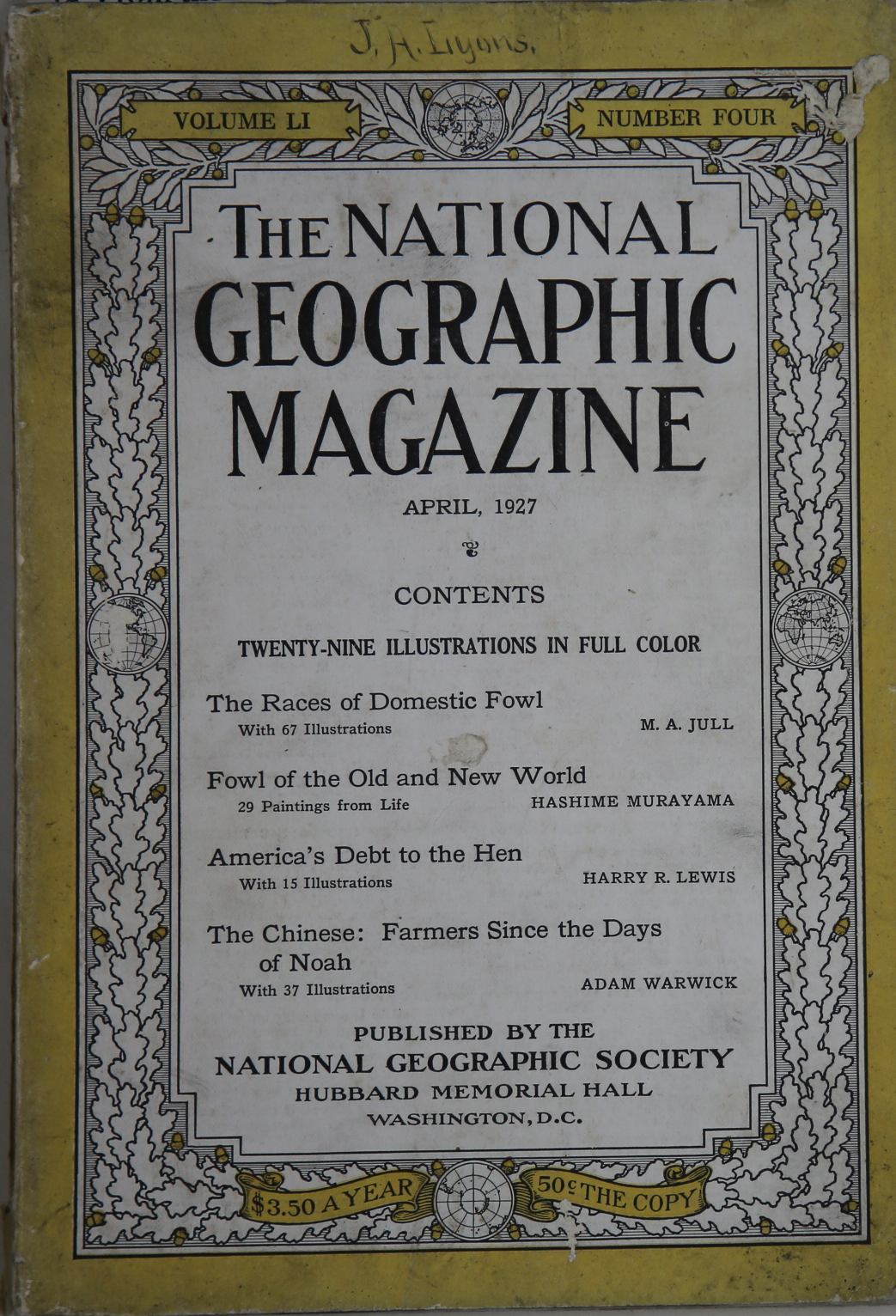
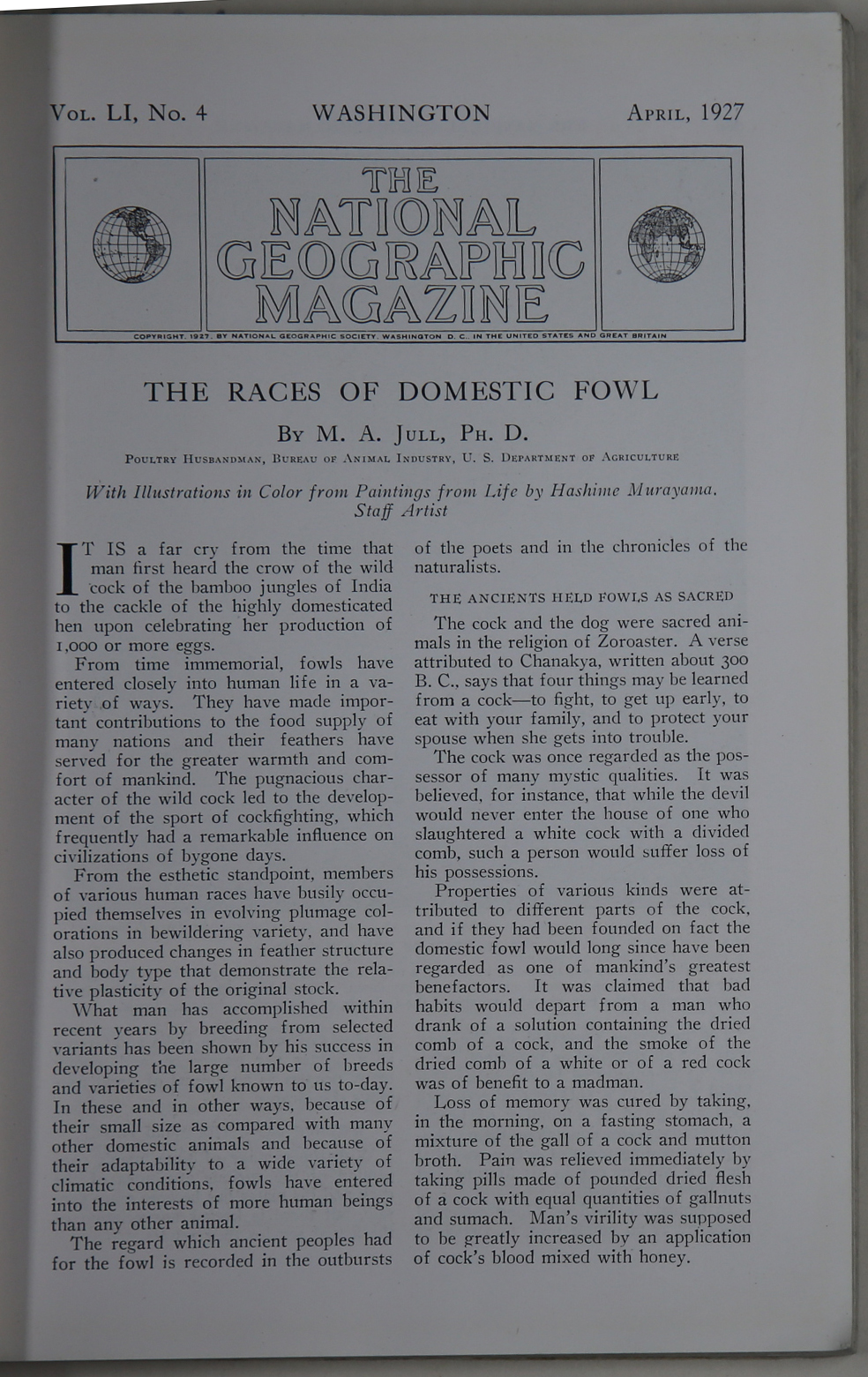
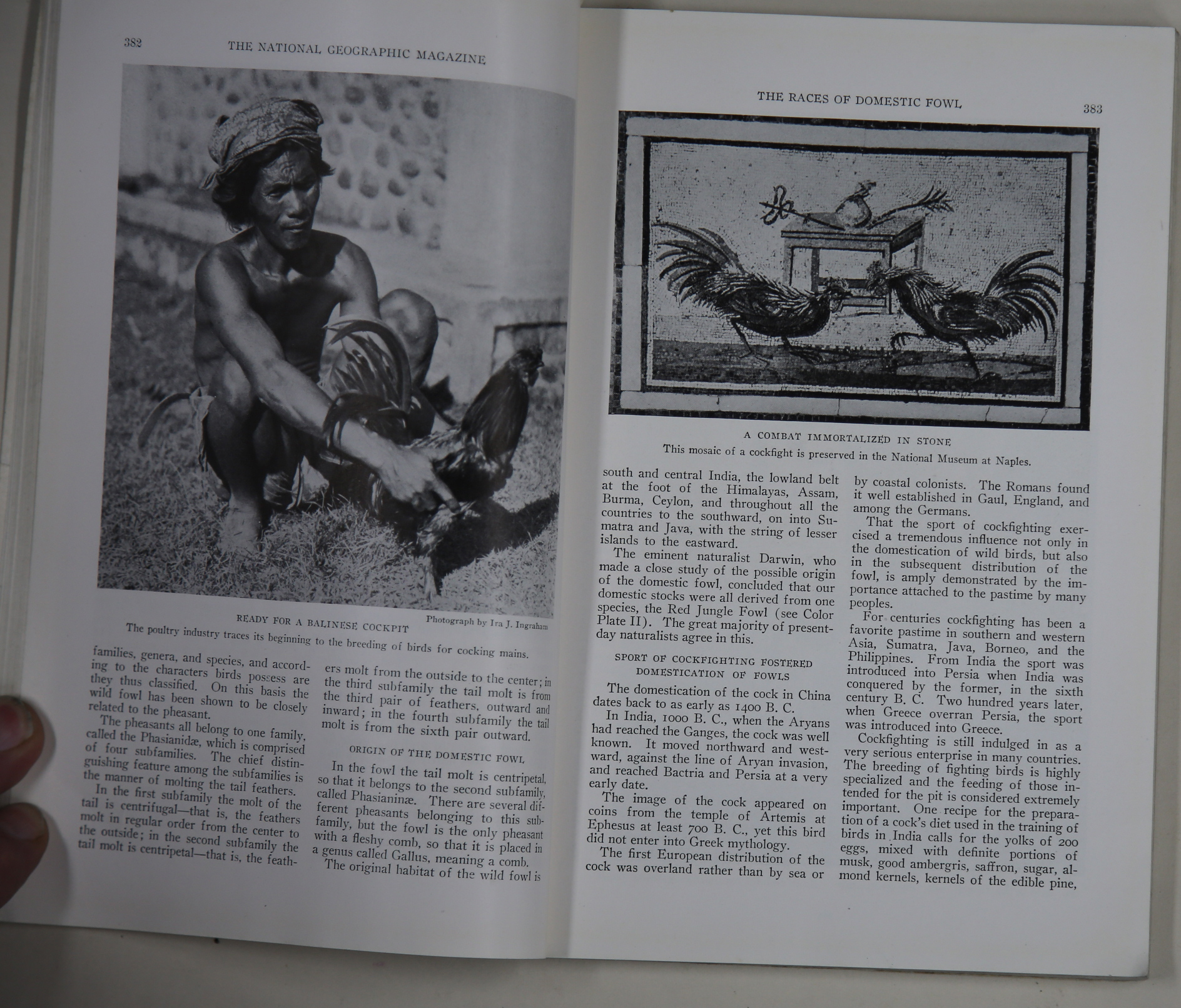
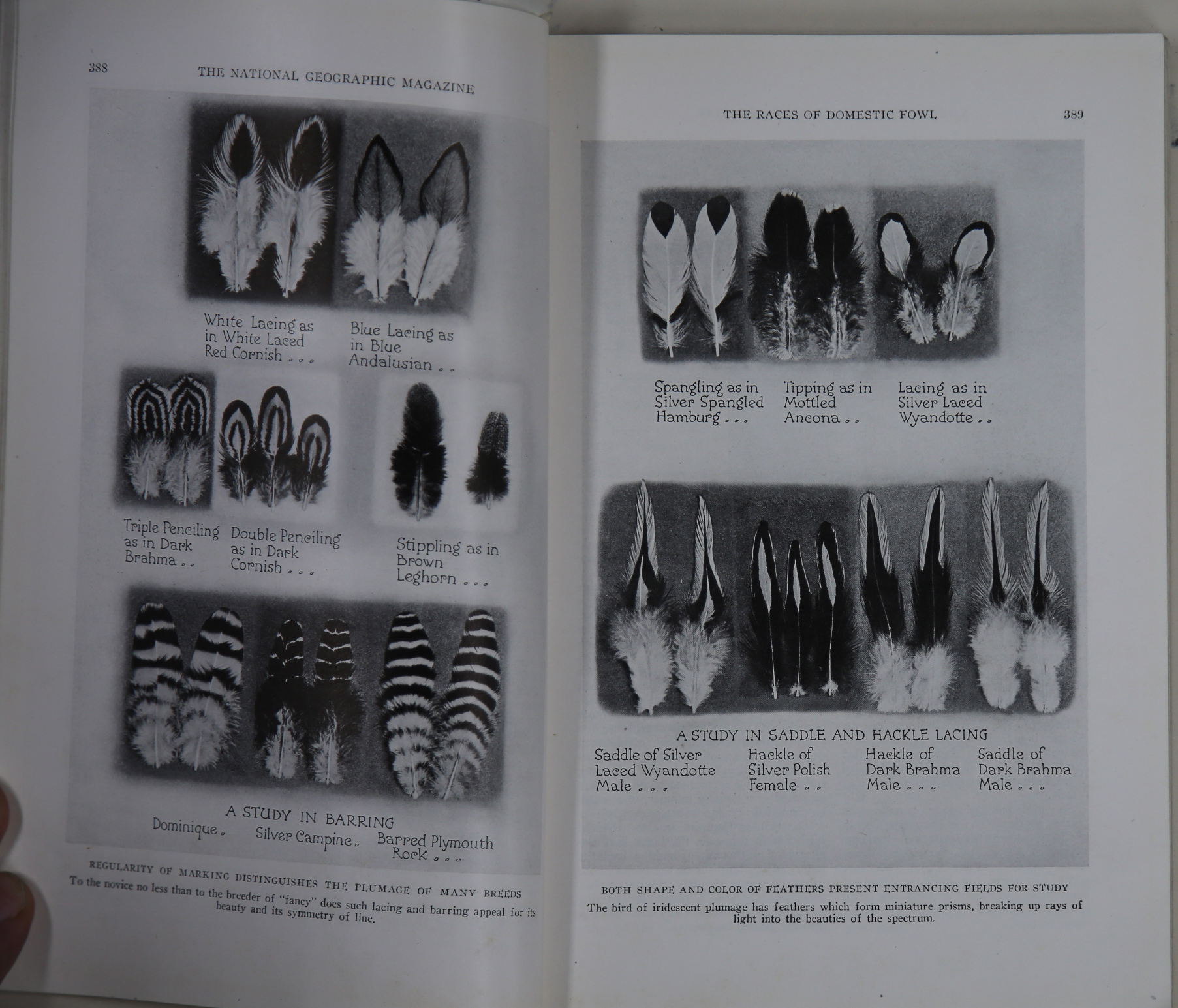
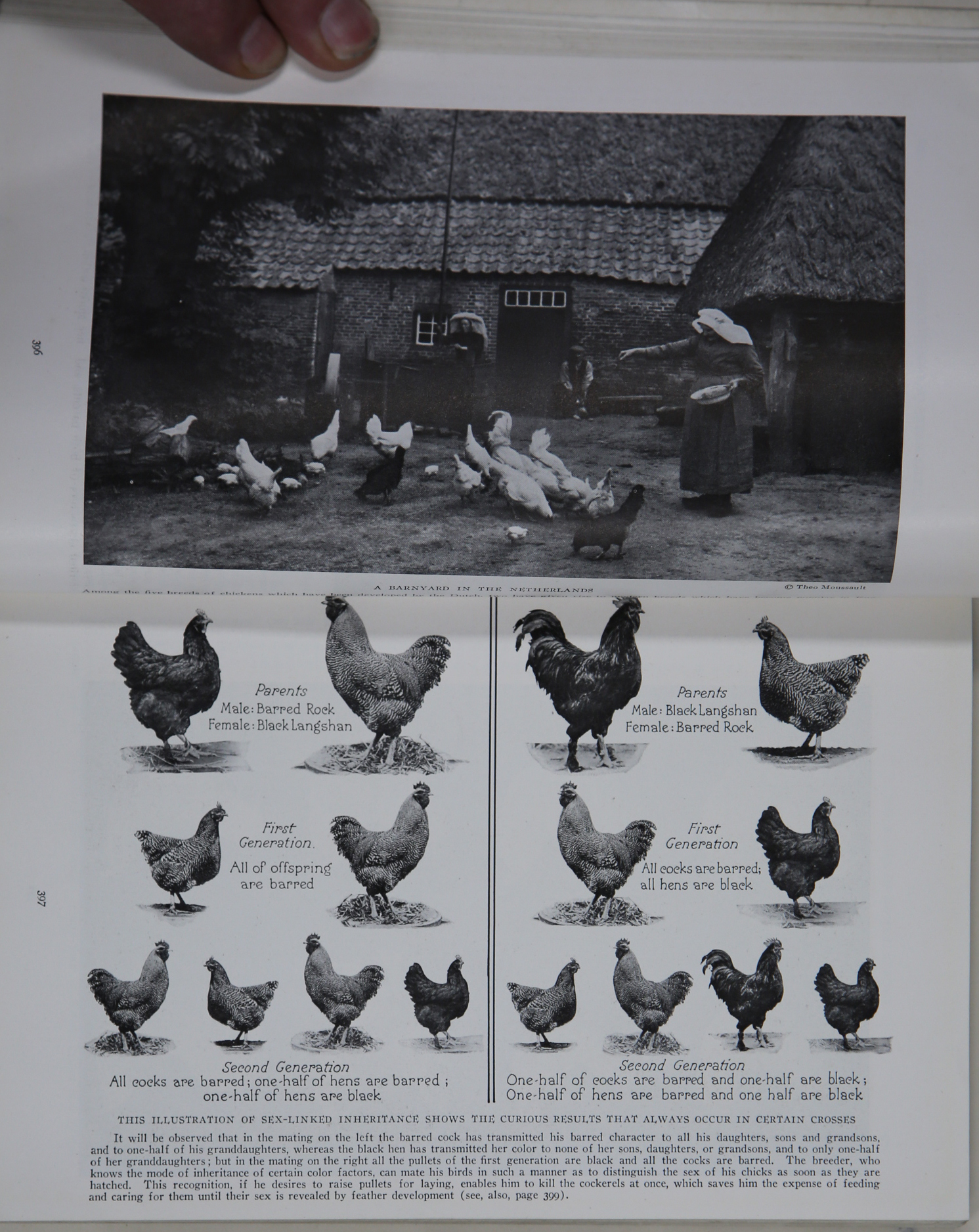
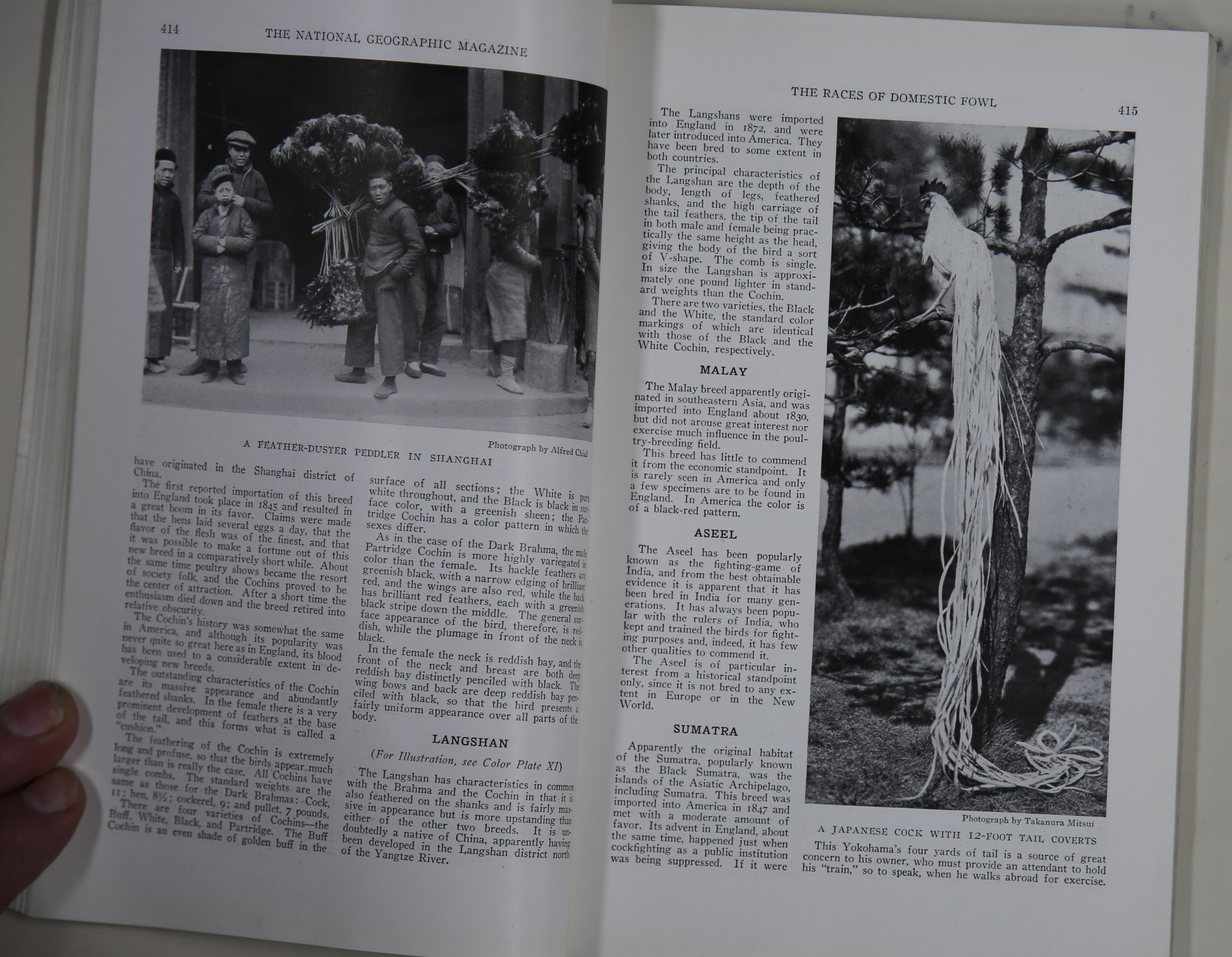
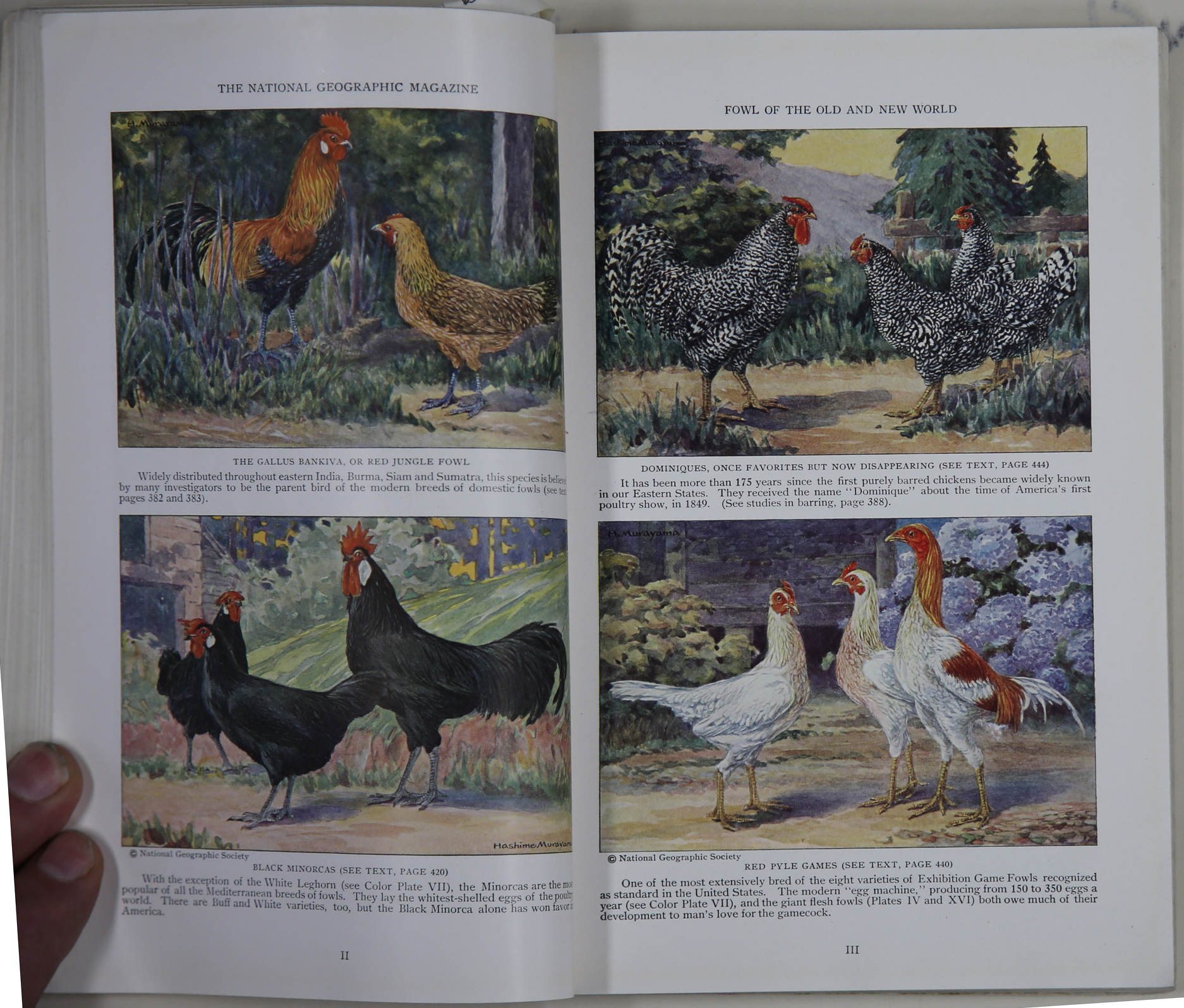
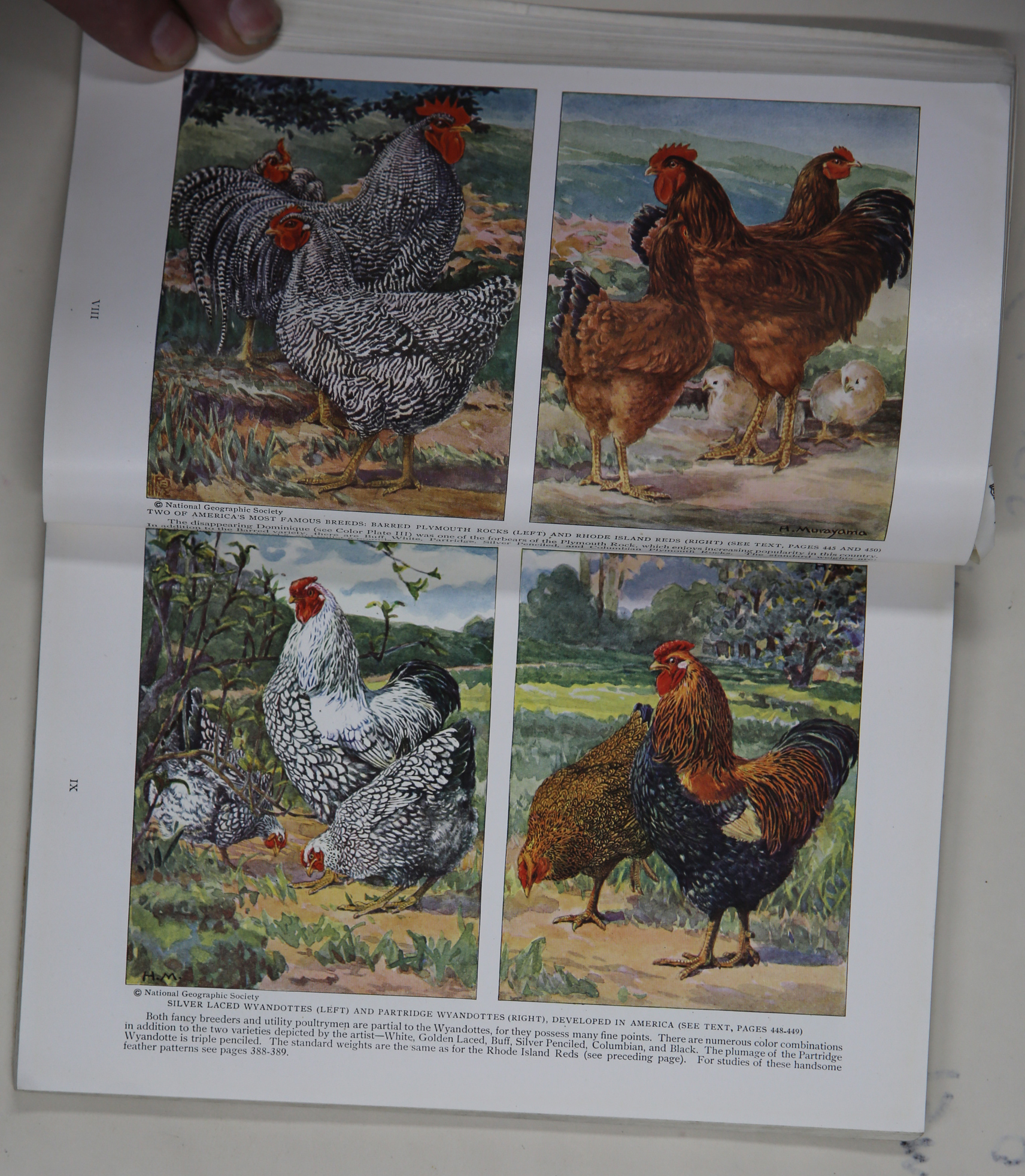
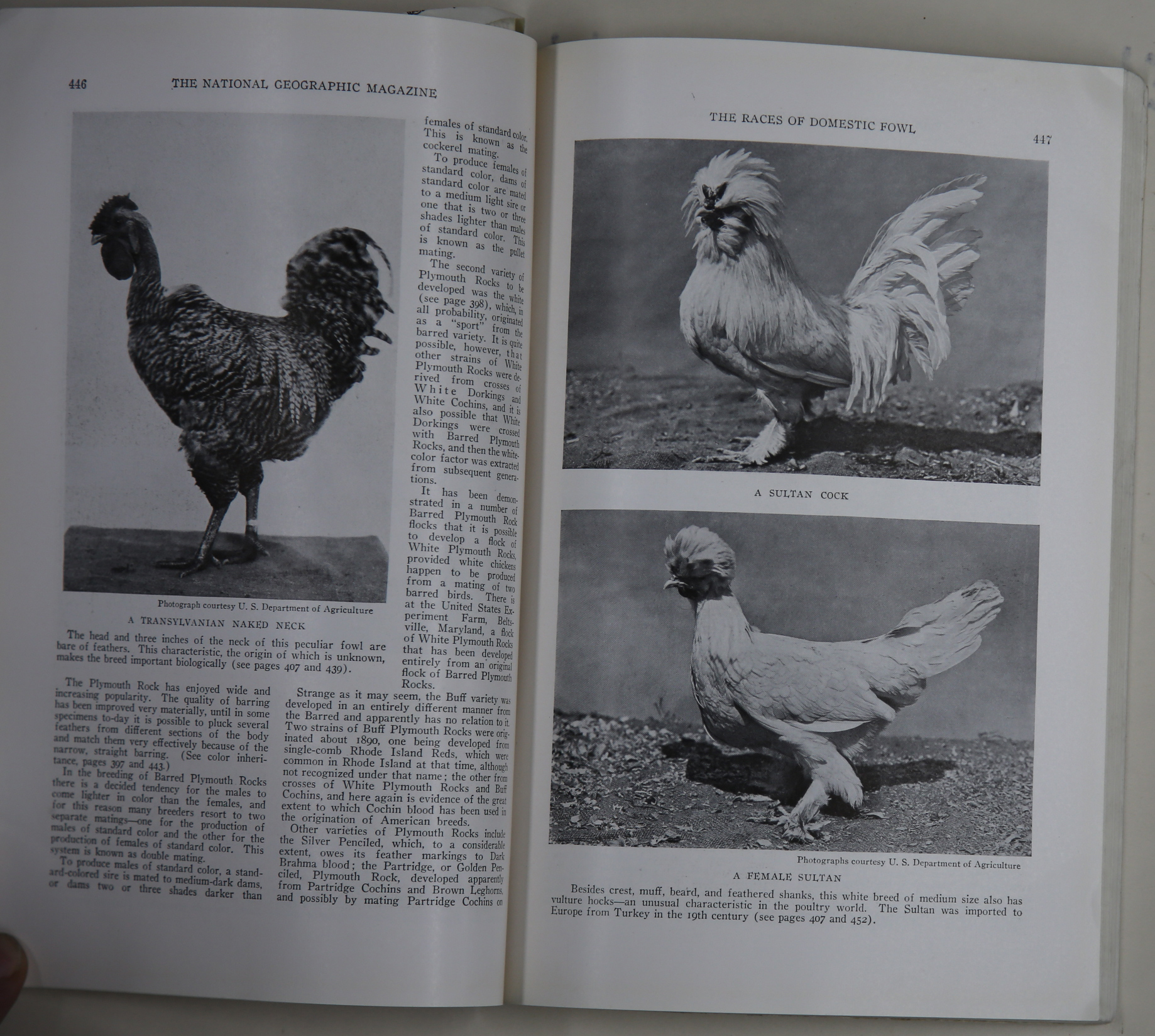
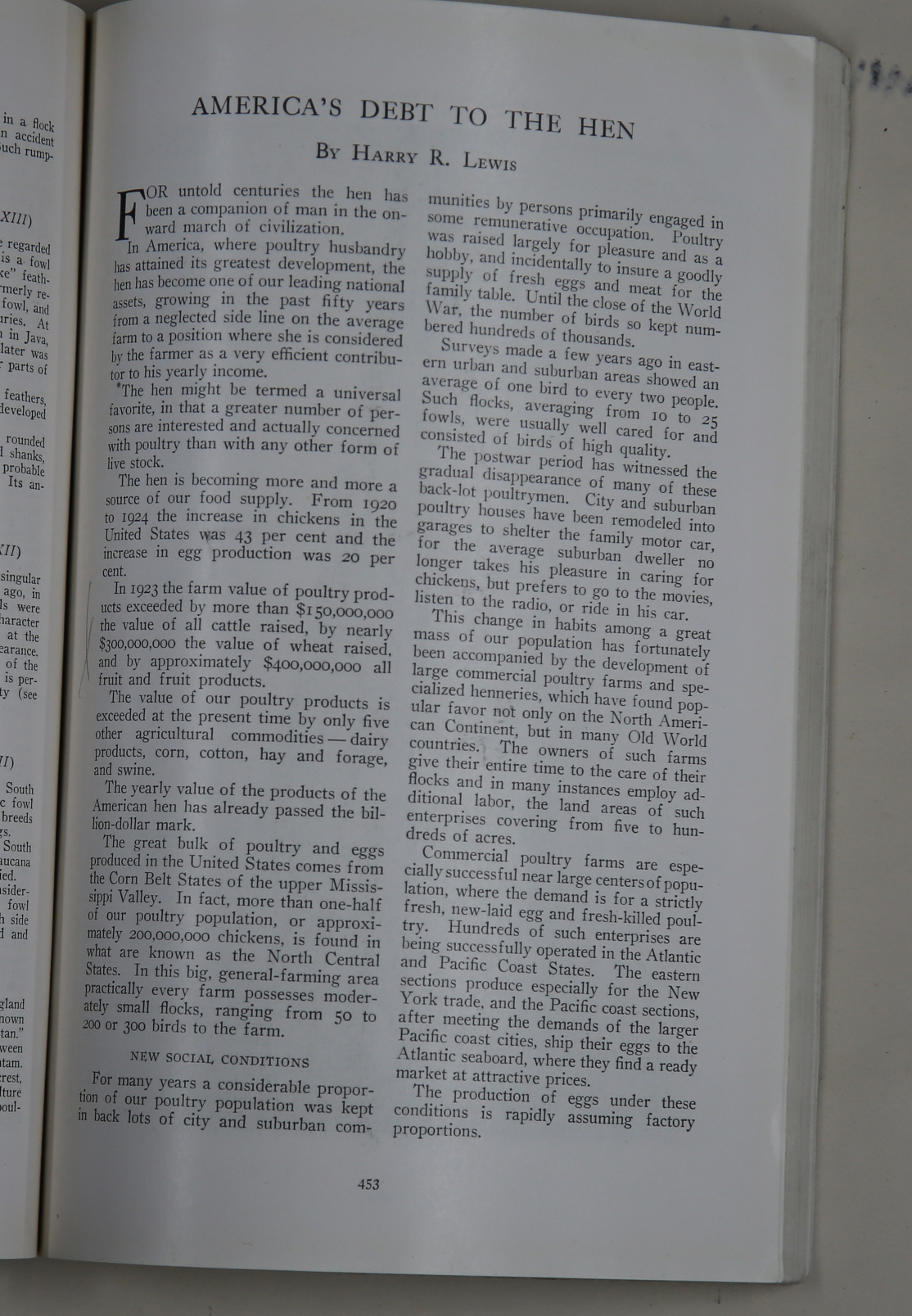
National Geography March 1930
Fowls of the Forest and Stream Tamed by Man by Morley Jull pp326-371 including Fowls of the Field, Park, and Farmyard , 16 colour paintings from, life by Hashime Murayama inserted into the text.
It seems to me that this first work was very successful as both it is cross references at the beginning of the second articles and the articles were published in the midst of the turmoil of the stock market crash of October 1929. Was it that this issue was already printed by the crash?
There is a nice balance of the second articles covering waterfowl and turkeys to make Nat Geo an all inclusive publisher.


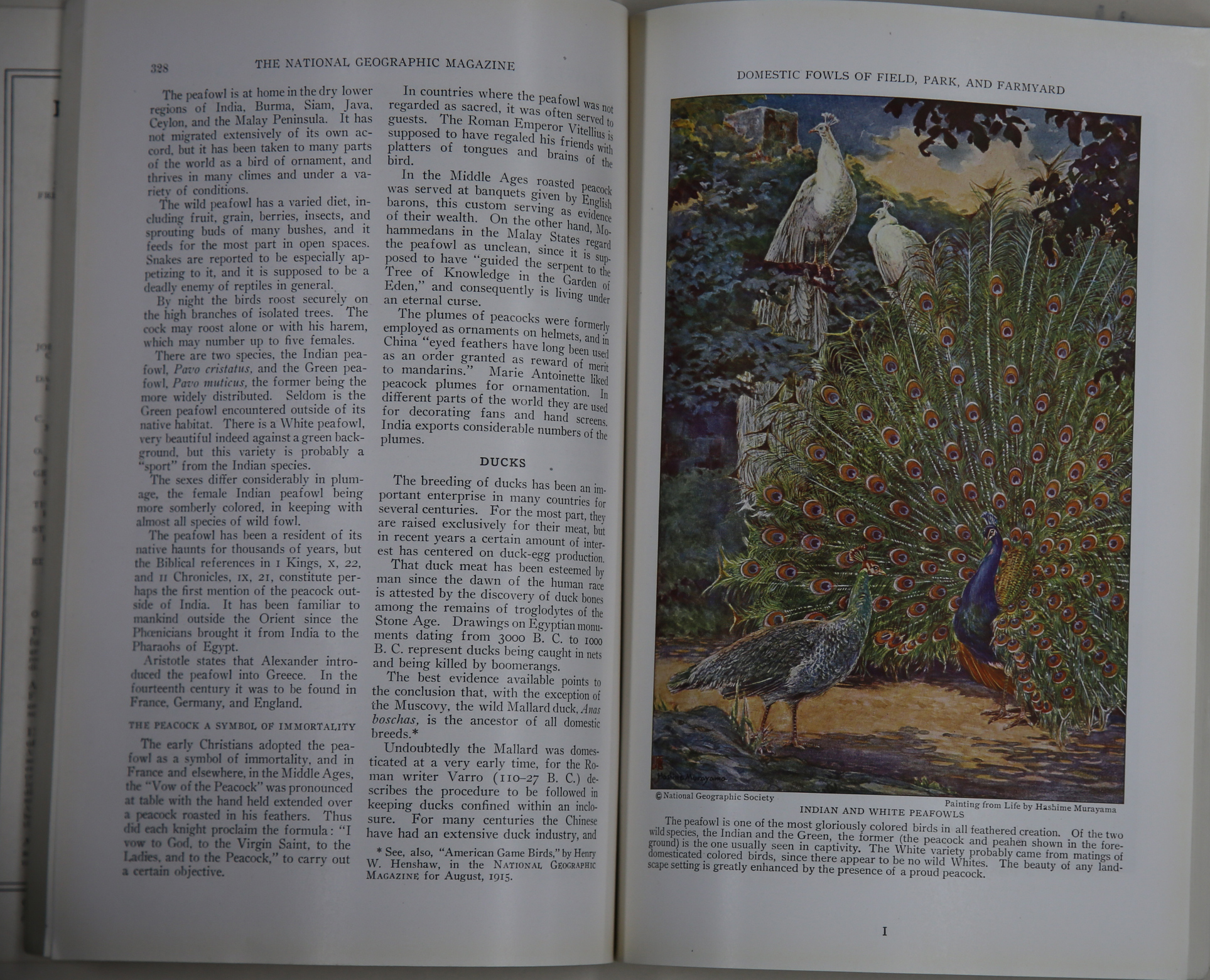
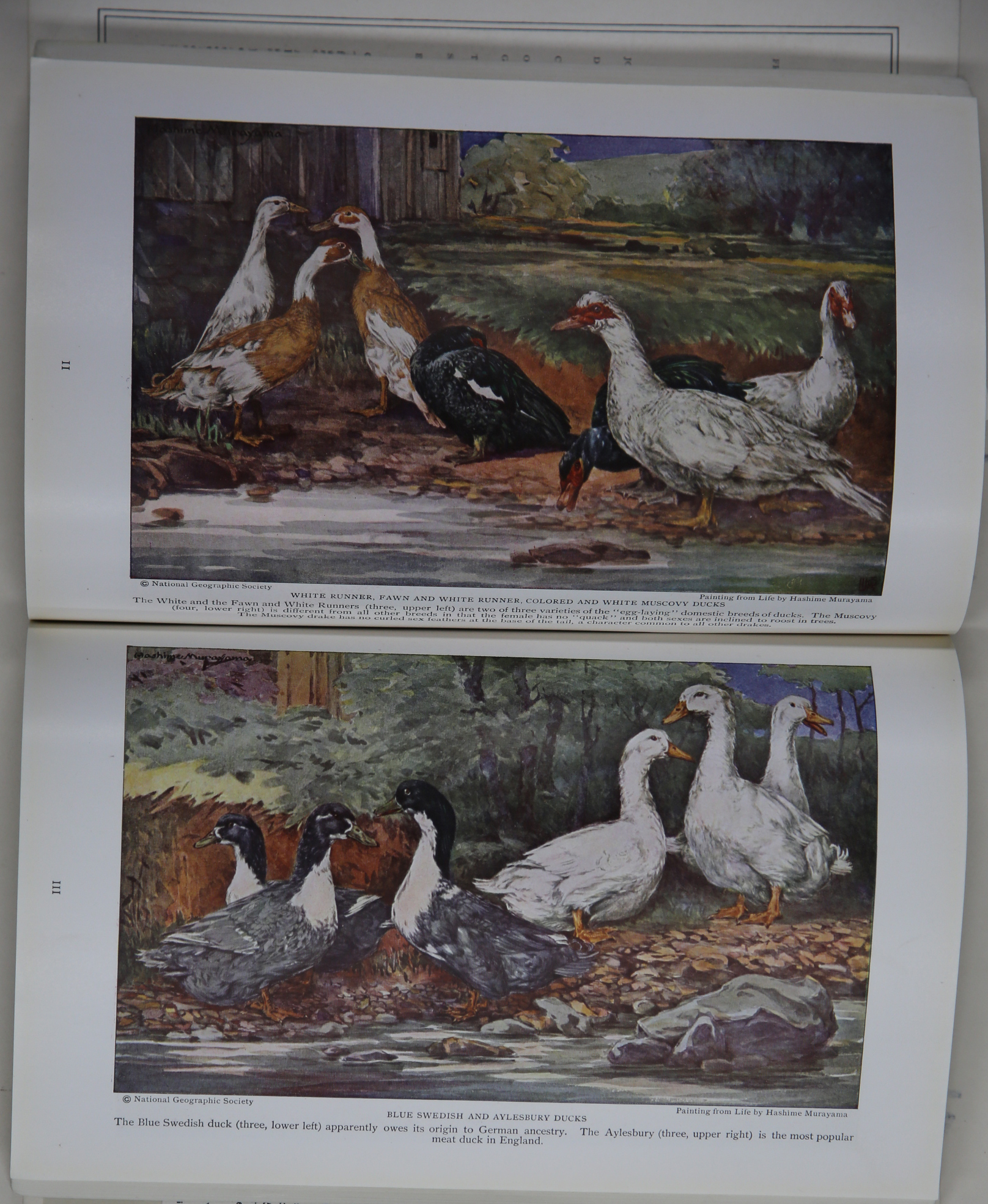
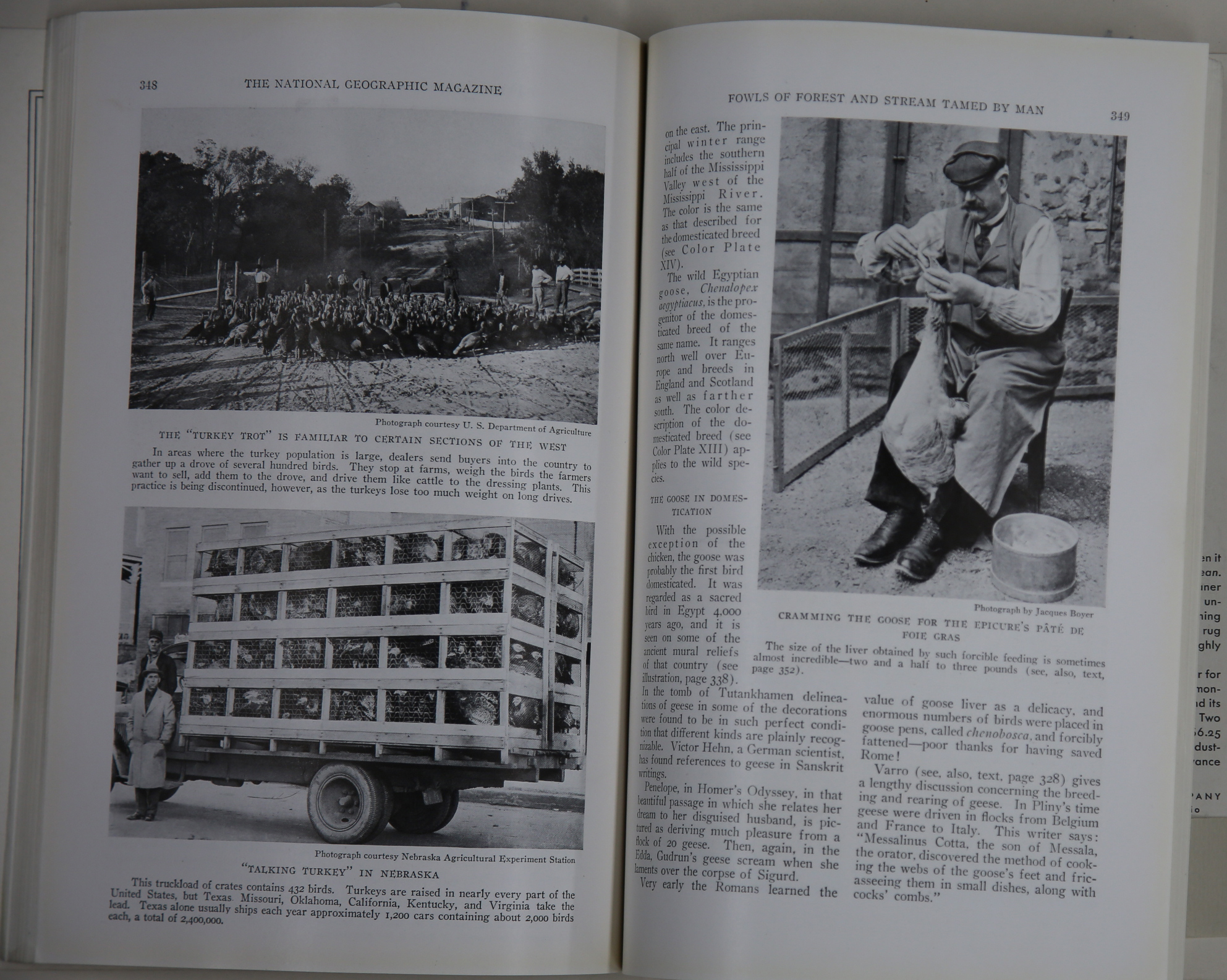
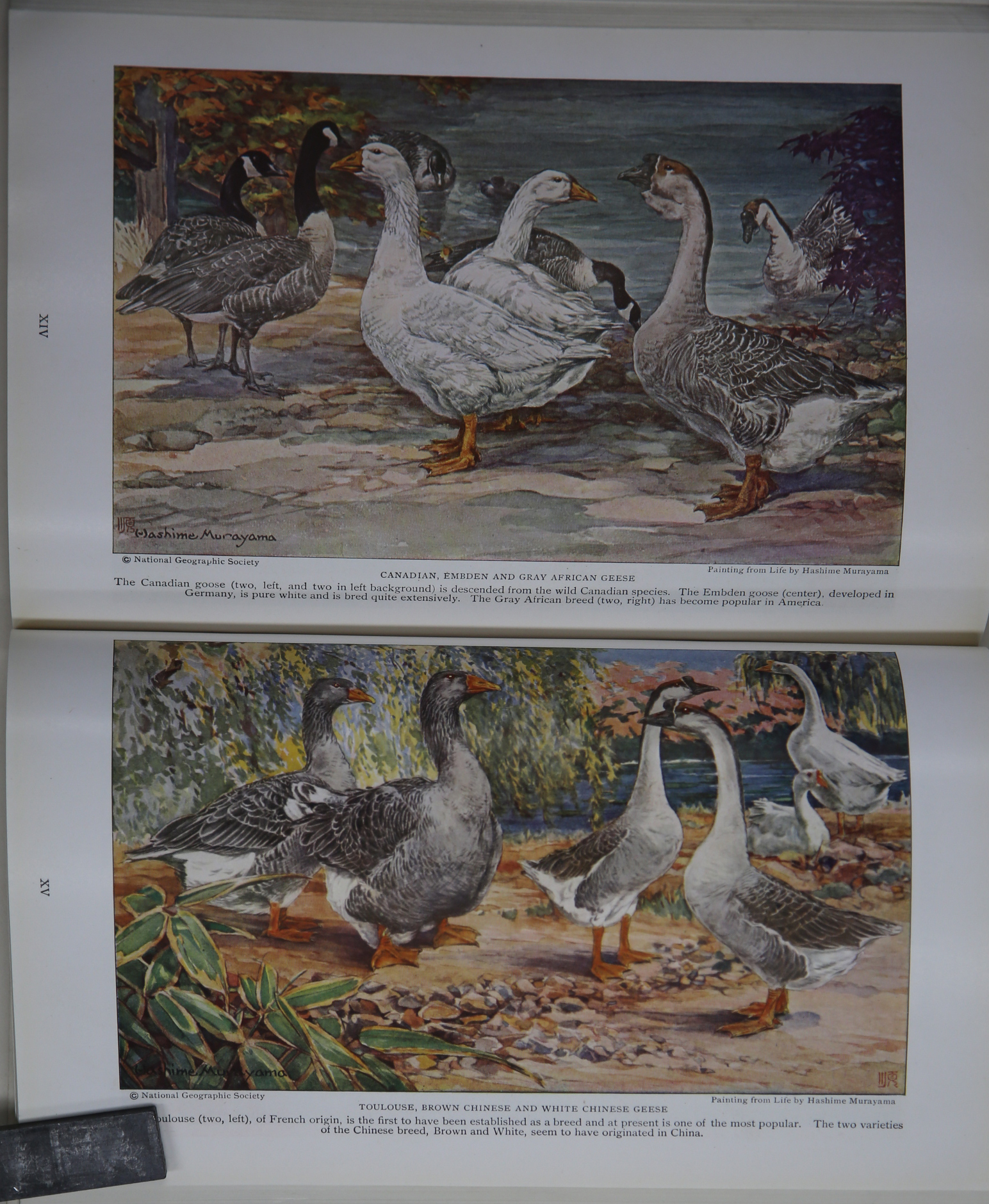
National Geography September 1948
Easter Egg Chickens by Frederick G Vosburgh illustrated by B Anthony Stewart pp377 -387 This article was written as a follow up to Jull's first article in 1927. A young man saw the painting of the Araucana (Jull 1927 Plates xiii) by Murayama and set about to develop a flock of birds called Easter egg Chickens as they lay eggs of all colours. It traces the work of following the breeds in order to collect the colours.

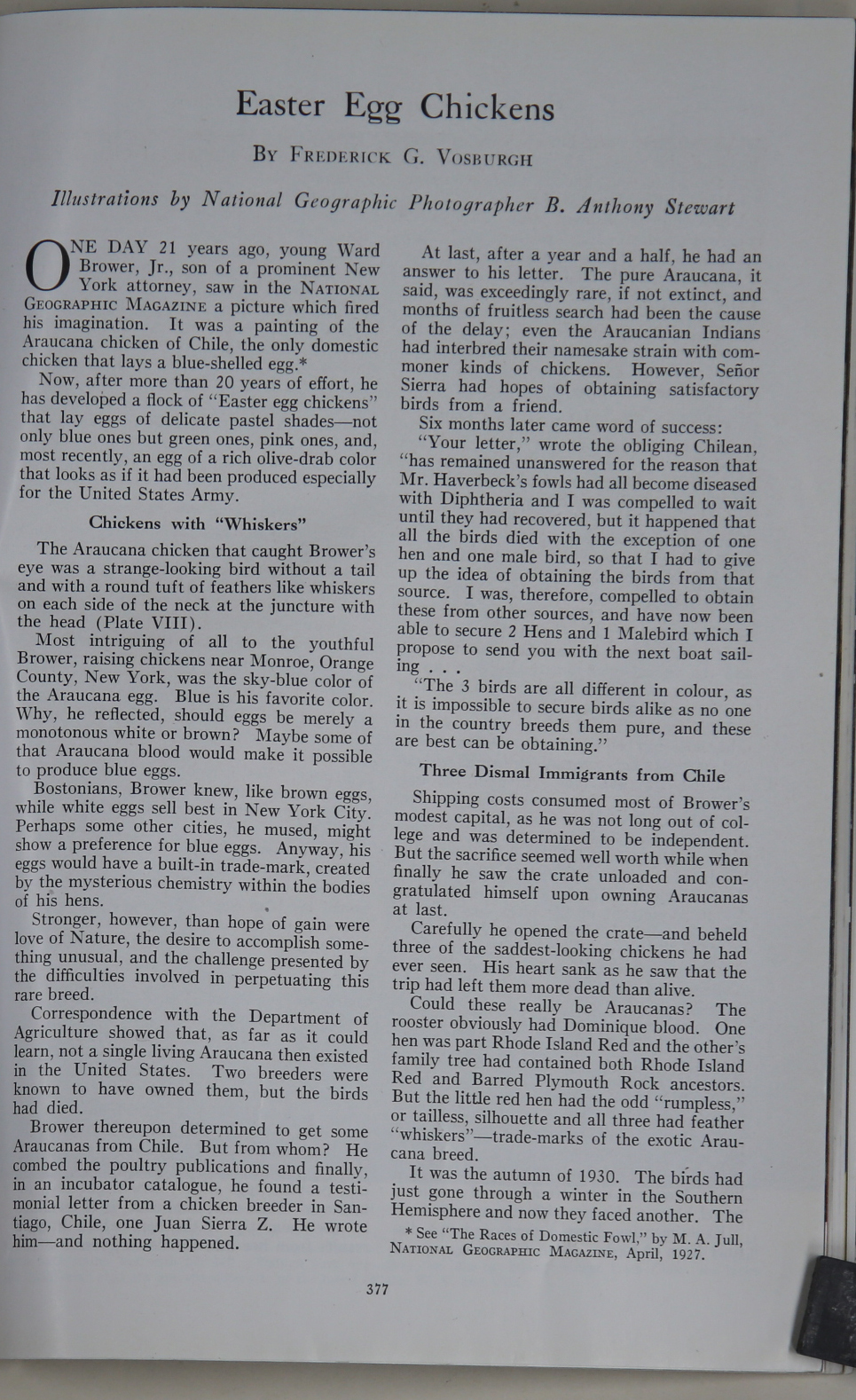



National Geography December 1970
Scientist Studies Japans's Long Tailed Fowl by Frank X Ogasawa and Eiji Miyazawa pp844-855 11 colour photographs. Having visited Japan, I found it hard to get in to see lo0ngtailes fowls mainly due to the language barrier and an inability to find a current contact. I did get to see Long Crowing fowl and a number of other breeds and enjoyed the hospitality of the breeders. I was unable to be there for the shows, finding I had arrived in the far north following a lead only to find the long crowing competition was the day before. The long tailed fowl require dedication and have long held a fascination for those of us not that dedicated.
I have written elsewhere about the Japanese Encyclopaedia of Poultry and a follow up article of my travels their though not so exciting as some others I know.

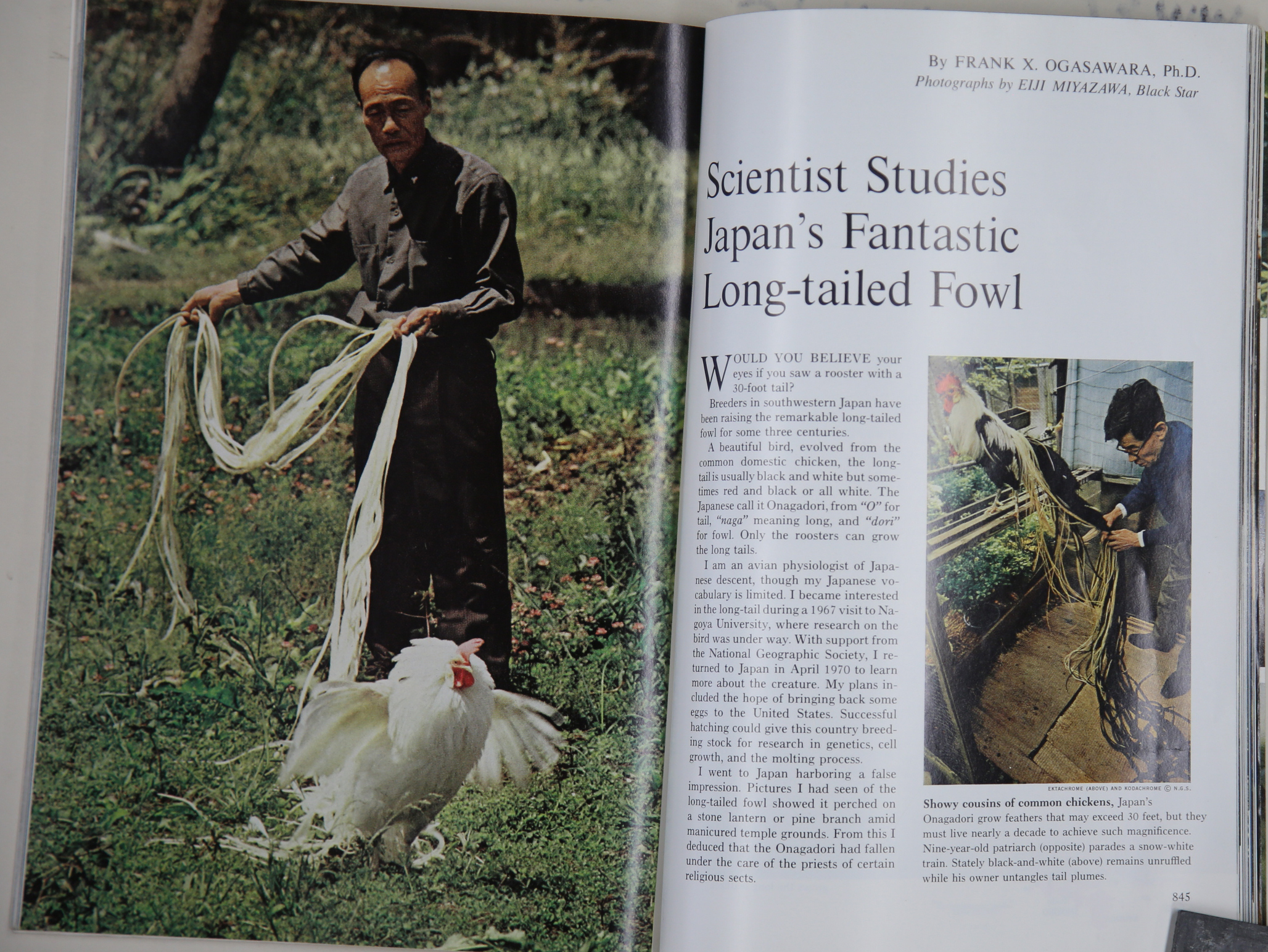
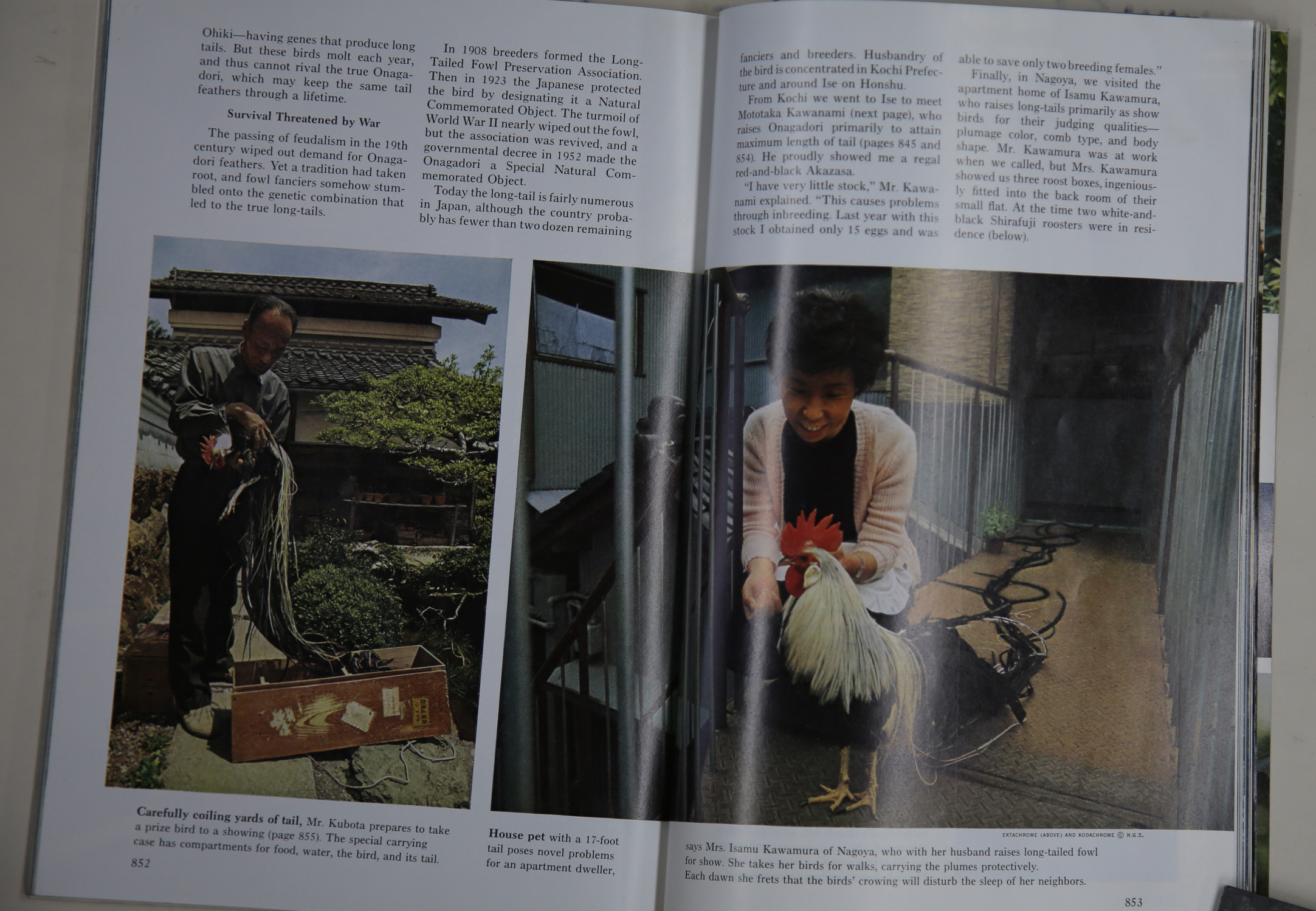
National Geographic January 1926
Man's Feathered Friends of Longest Standing by Elisha Hanson pp63-110 including Pigeons of Resplendent Plumage 12 colour paintings from life by Hasime Murayme inserted into the text. A study of the pigeon opening with a picture of the First Lady Mrs Calvin Coolidge releasing a pigeon from the Whitehouse to fly to the annual Poultry Pigeon and Poultry Association in Cleveland Ohio. Now that's an idea. Release a flock from the steps of Parliament House or from the Lodge by the wife the the PM. An interesting popular press history. I like the pigeon whistle, from China. I bought a porcelain version when there back in the 90's. Towed on a string attached to the leg.
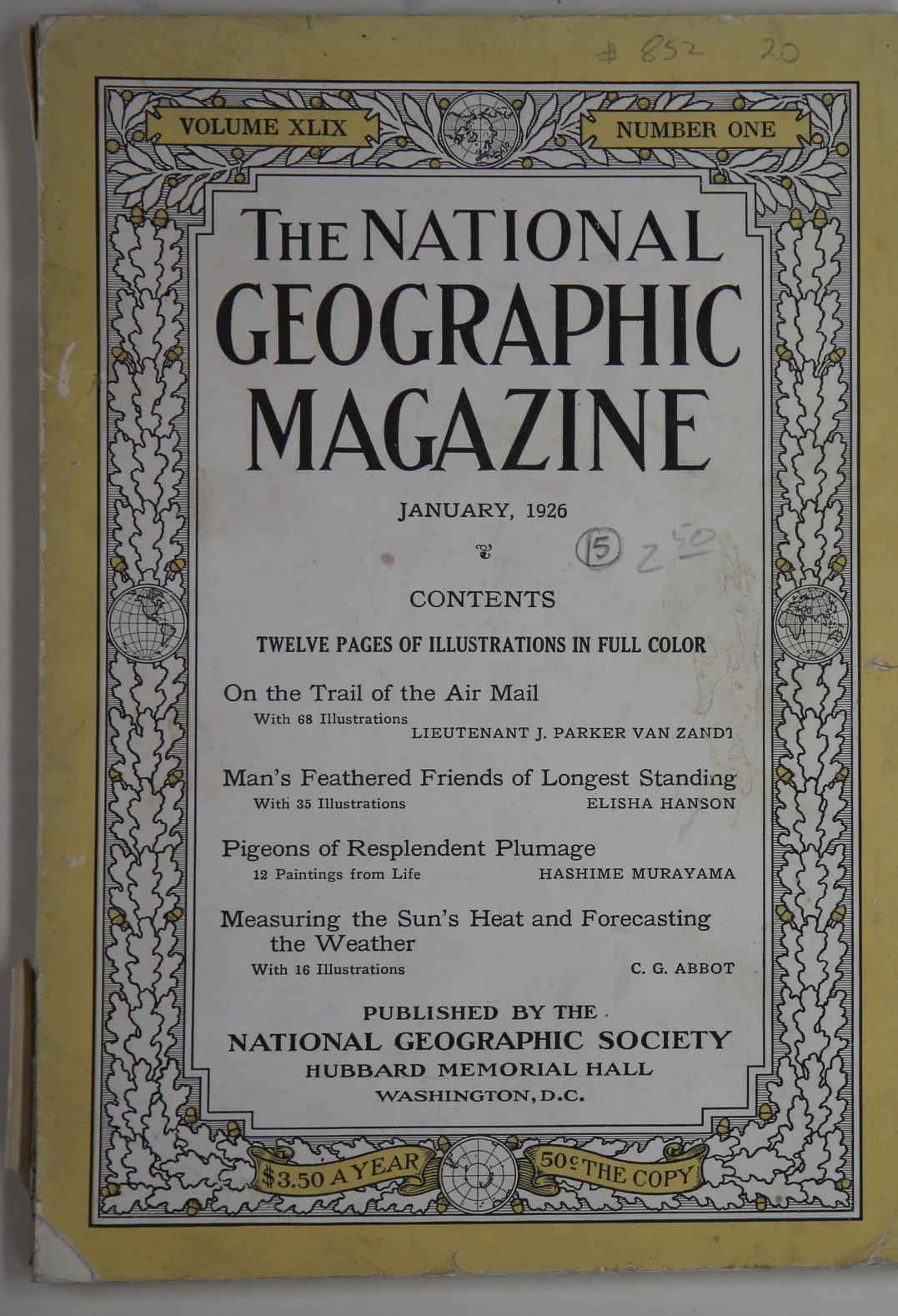
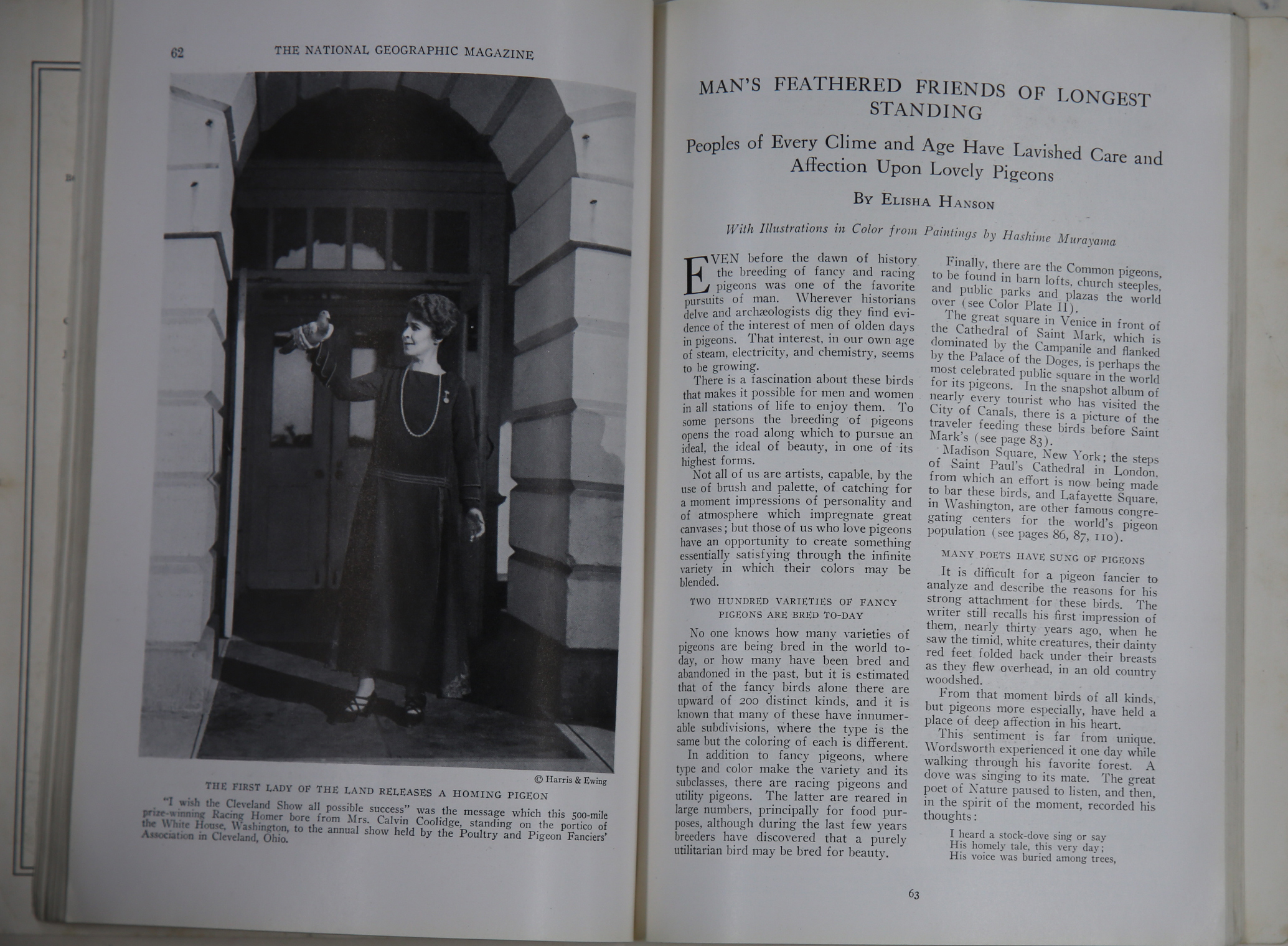
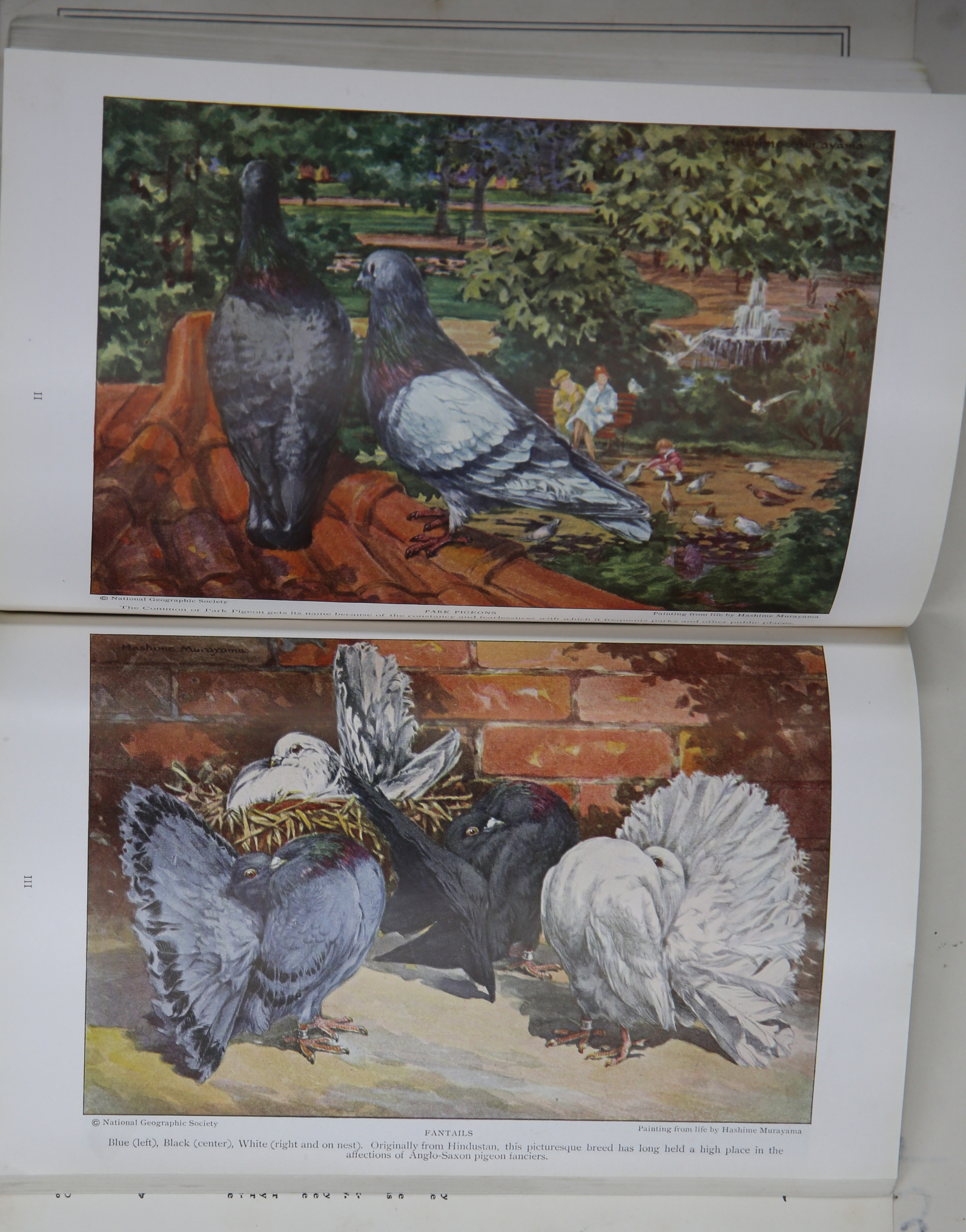
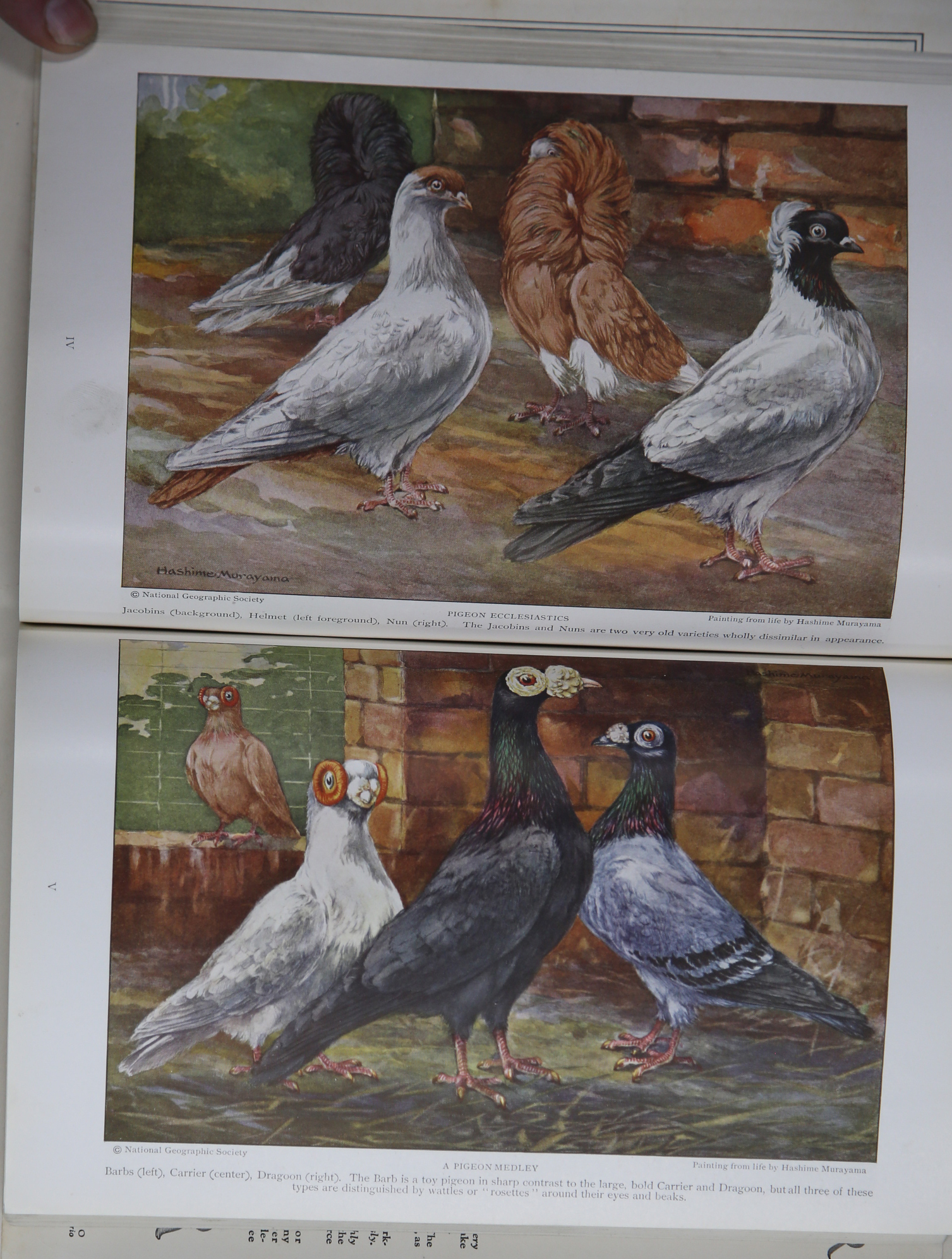
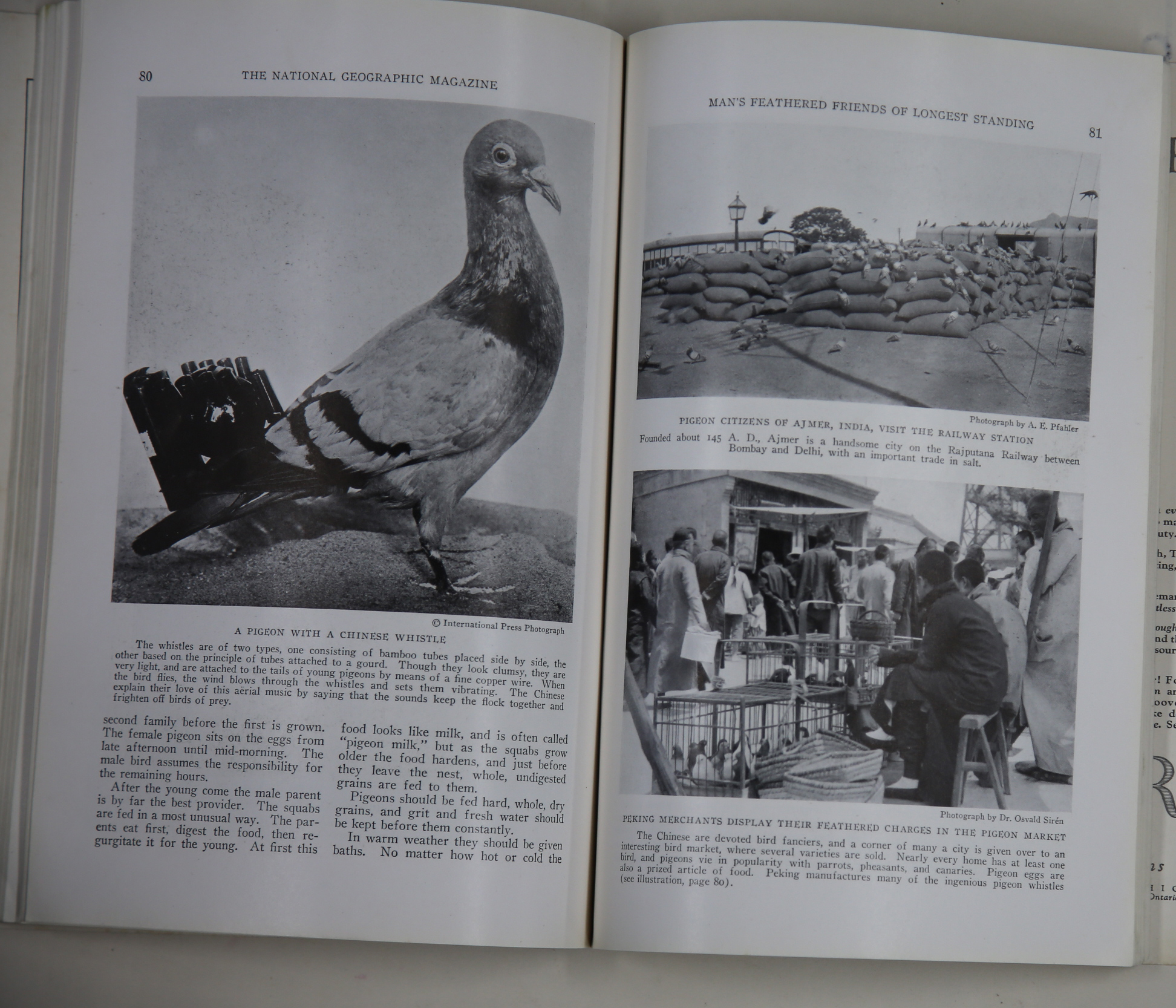
A couple of less interesting addons to the list maybe one day I will ass the rest to the list here.
National Geographic December 1920
Falconry the Sport of Kings by Louis Agassiz Fuertes pp429-460 illustrated inn colour from painting
by the author and American Birds of Prey a review by the same author. 460-468.
Delightful colour plates, the author is a talented artist and has a good knowledge of the history of the sport.

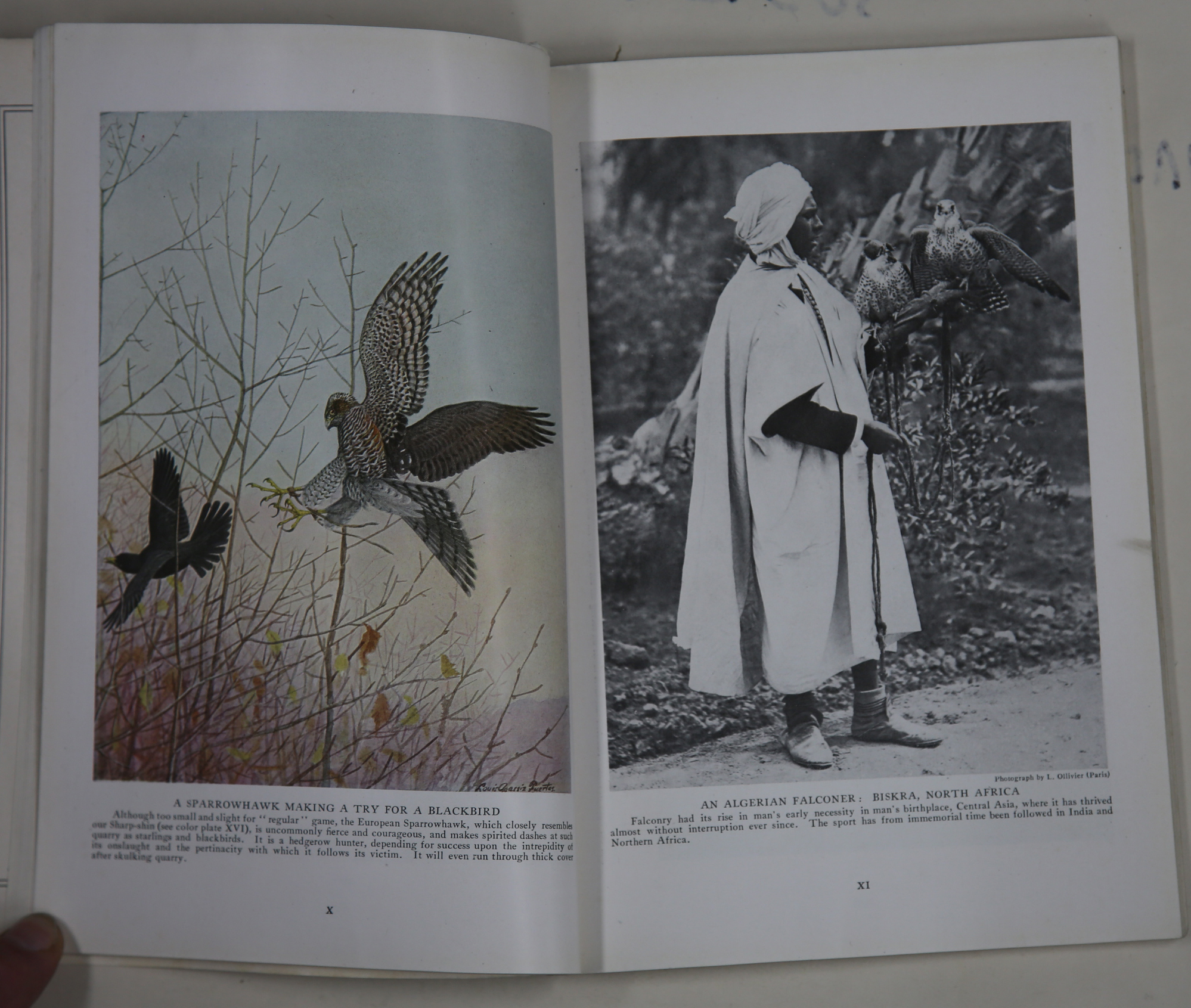
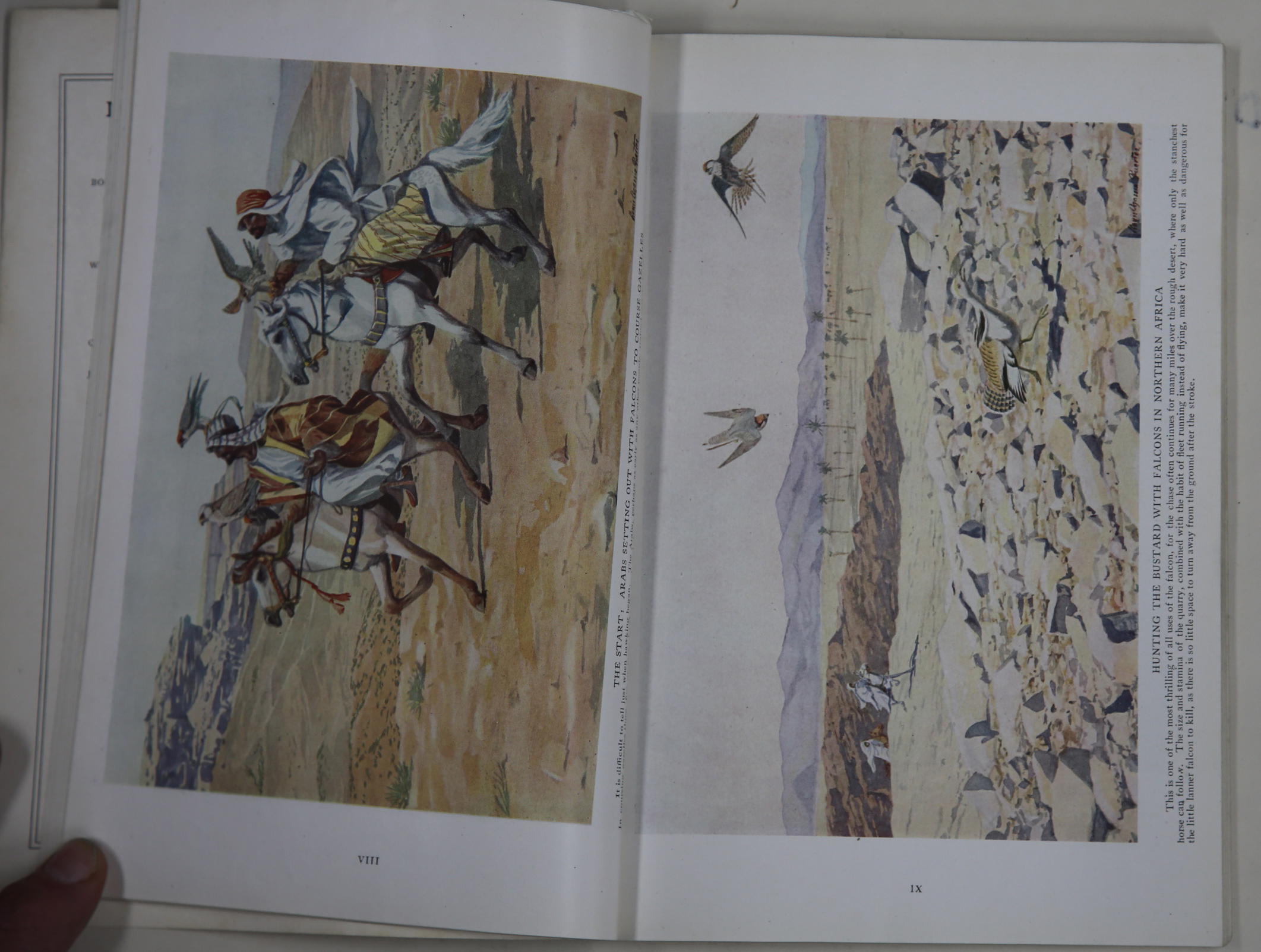
National Geography July 1932
Seeking the Smallest Feathered Creatures by Alexander Wetmore with 9 illustration 65-89 including Humming Birds Swifts and Goatsuckers By Maj Allan Brooks 35 paintings in colour inserted in the text. I have a native garden bed of dense bushes in my front yard. It doesn't appear to be much more than an overgrown mass of dense bush until one sits quietly in the sunshine. After a few minutes the tiny birds accept our presence and the movement begins, the odd leaf flickers, a rustle or two, and finally tint bird noises. If you are on a good say you will see the tiny birds with bodies smaller than the last joint on my little finger. The move so fast and hide so well I don't know what they are. They are too fast to photograph, but its a delight to know our little patch of dense scrub is home to these birds. I would like politically incorrect a gun to take out the cats who hunt there, but they dont seen to be able to catch the birds.
So I like the casual read and the pics are lovely.

National Geographic November 1923
The Story of the Horse, Major General William Carter Harding .USA with 60 illustrations pp455 -566 including Horse of the World Edward Herbert Miner 24 paintings in oil reproduced in full colour. (inserted in the text). Not a horseman myself, only time I like to be that far above the ground is standing on a balcony or flying a plane. At least the plane doesn't have random eject? This one doesn't fit here but it was in the same collection.
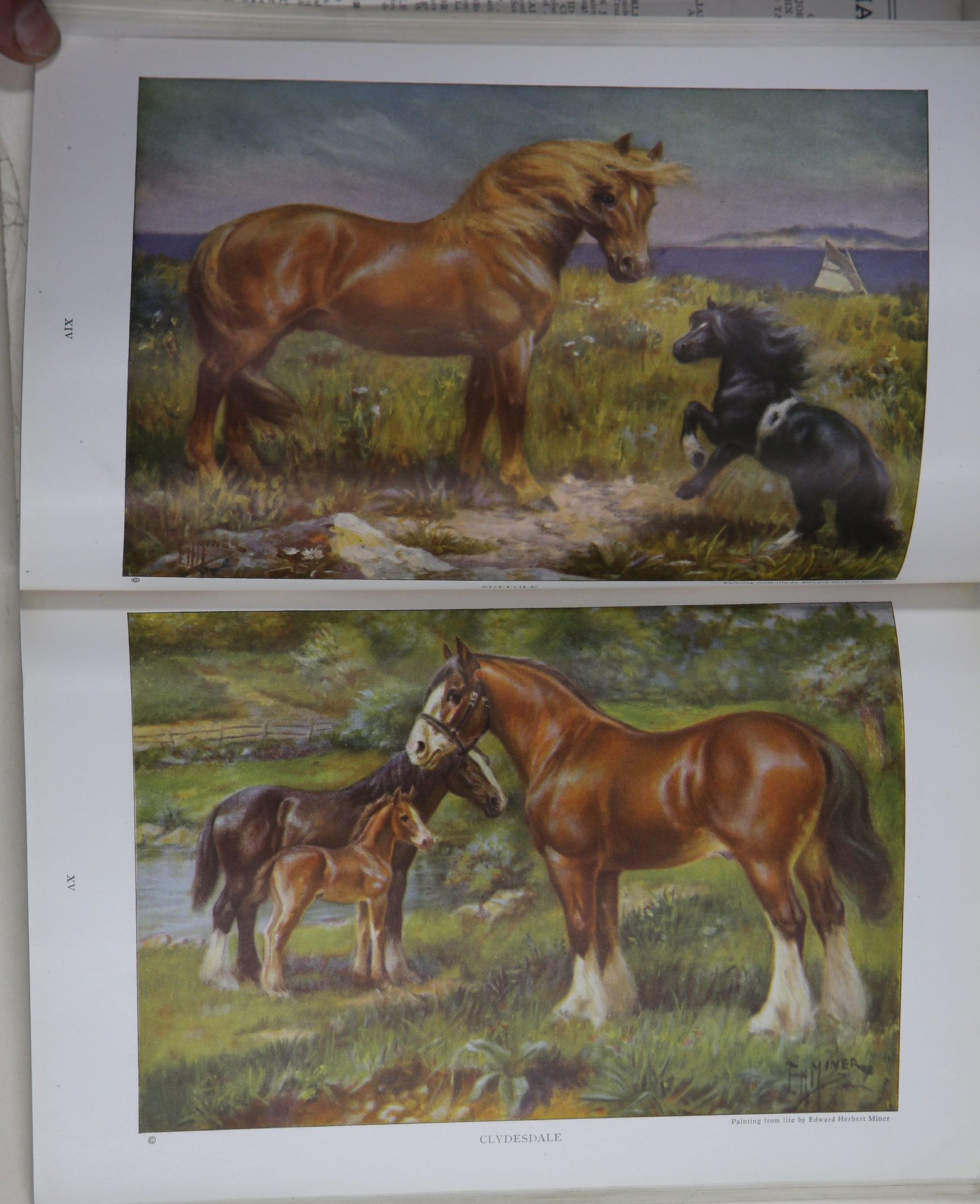
The Works of Morley Jull
Races of Domestic Poultry 1927, the Judd Detweiler,
offprint wrappers original pagination of the Nat Gedo article.
This copy owned by Harry Atkins Davenport Iowa, prominent in the APA.
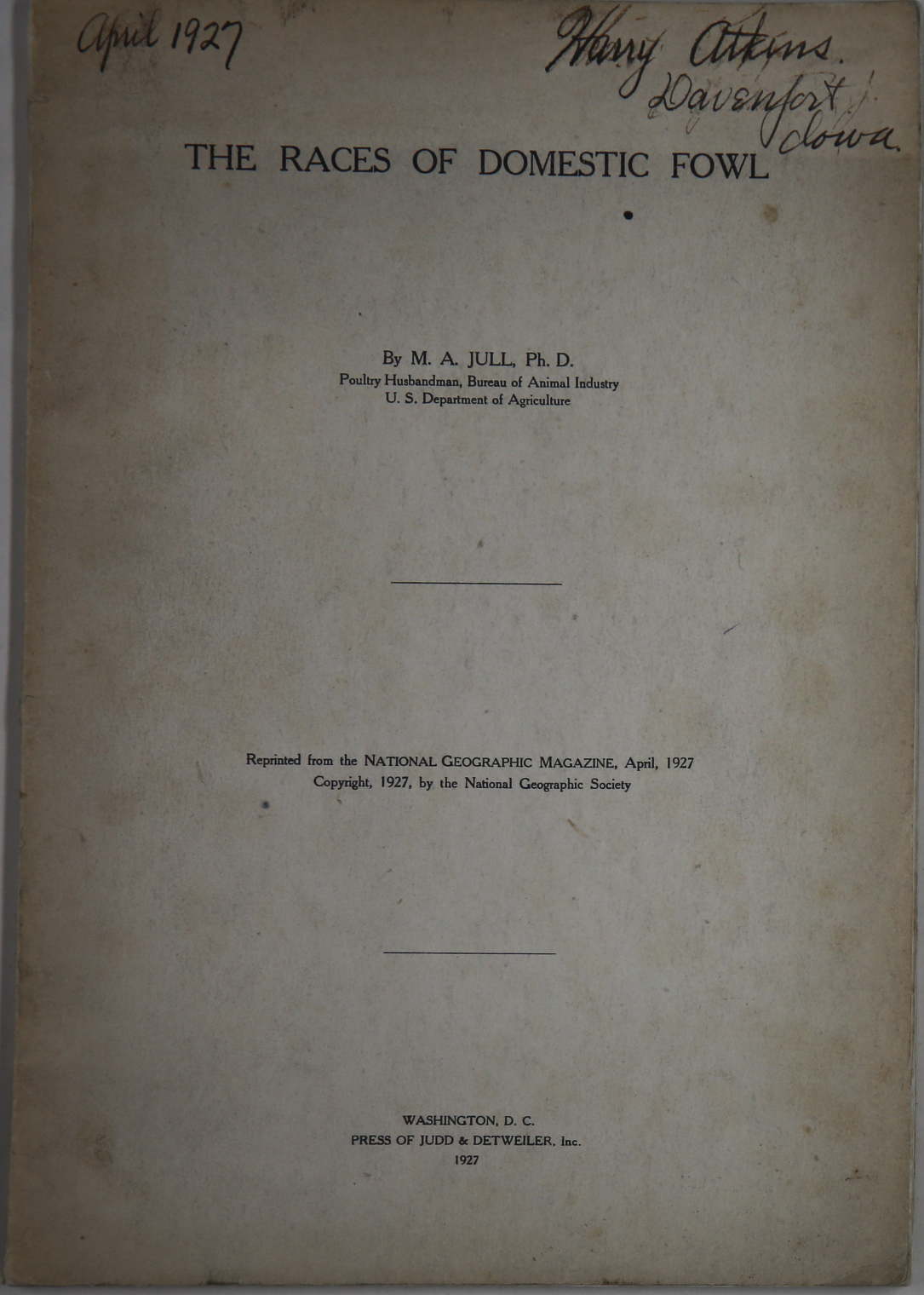
Progressive Poultry Raising 1931 Amour company, Chicago.
170x120mm 222 pp Paperback in wrappers stab stitched printed colour wrappers, lots of black and white photos.
Mainly production oriented but a neat artistic wrapper.
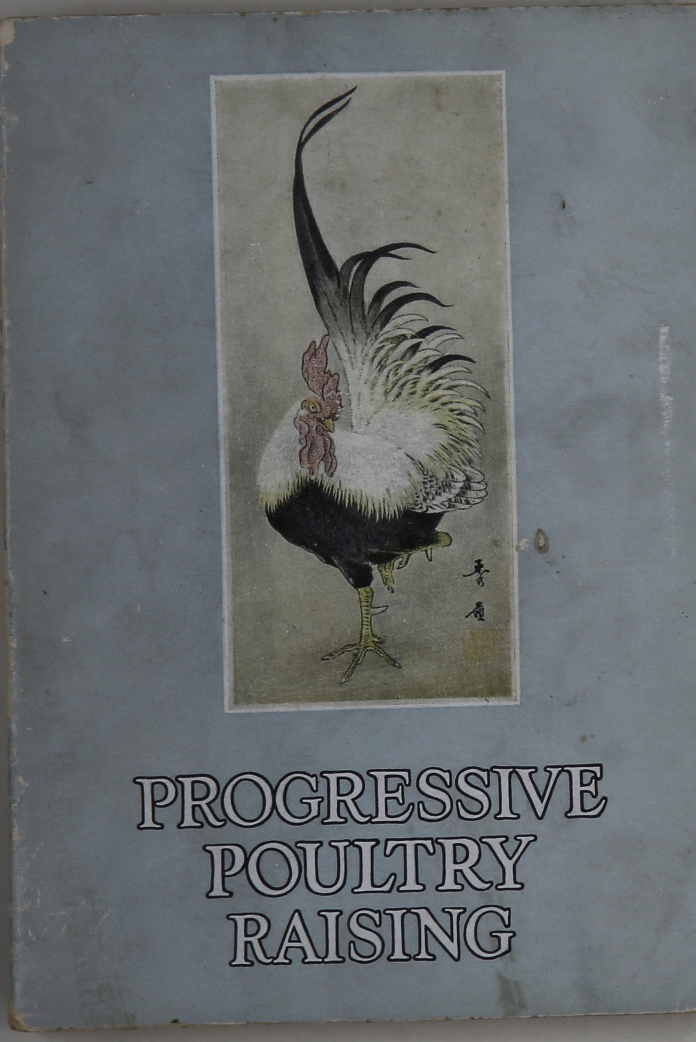
Poultry Breeding 1932 John Wiley and Sons and also Chapman and Hall
376pp 235 x 160mm, brown cloth, several editions.
A well illustrated technical book covering poultry breeds with an eye to commercial values of the existing breeds so lots of data on the feather shapes and colours as well as the physical type features. Not easy reading, Not usually expensive as there has been quite a few around. The copy at hand is signed by L E Card and the annotations suggest it was a proof copy.
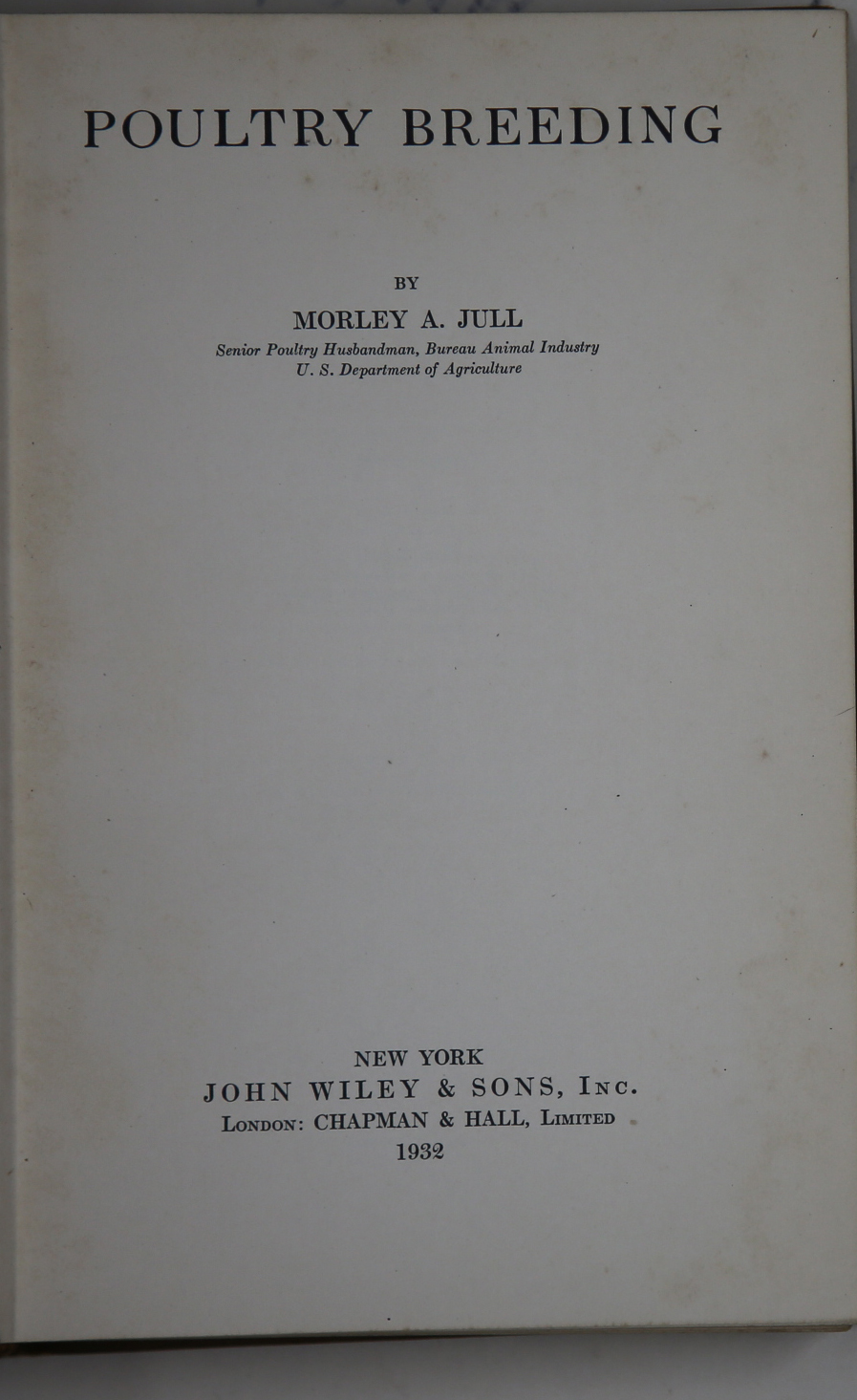
Successful Poultry Management 1943 McGraw hill.
467pp 235 x160mm. Green cloth
The companion volume to poultry breeding, which is the theory of breeding, where this is the practical application of the technical material.
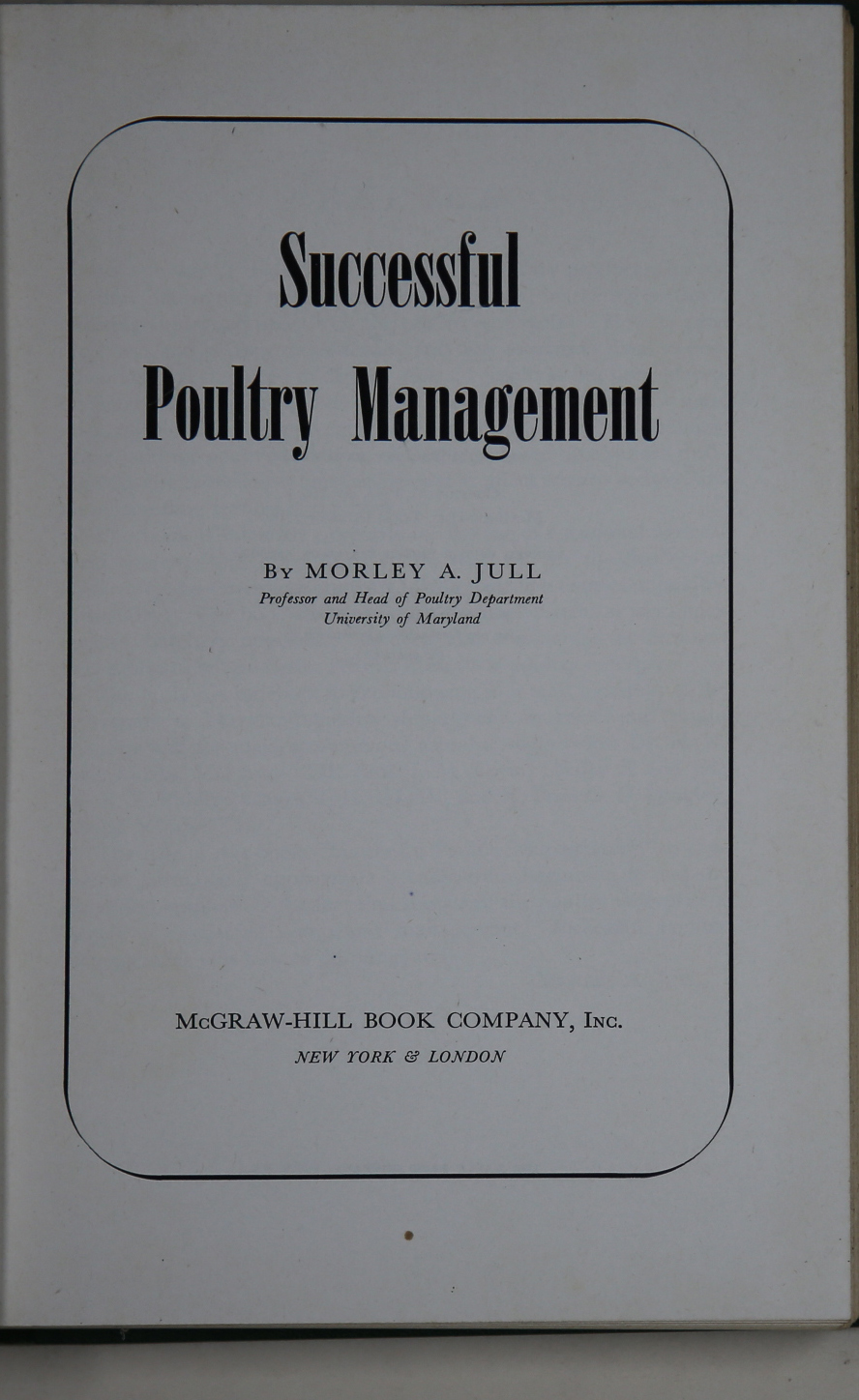
Raising Turkeys Ducks Geese Game Birds. 1947
467pp230x160mm cloth hardcover.
Broadly speaking a how to do it manual for those in the fringe industries which at the time were becoming prominent in the USA. For those who have an interest in these species above the fancy into the market. However growing them well for market,. is pretty much the same as growing them for the fancy, just on a bigger scale.
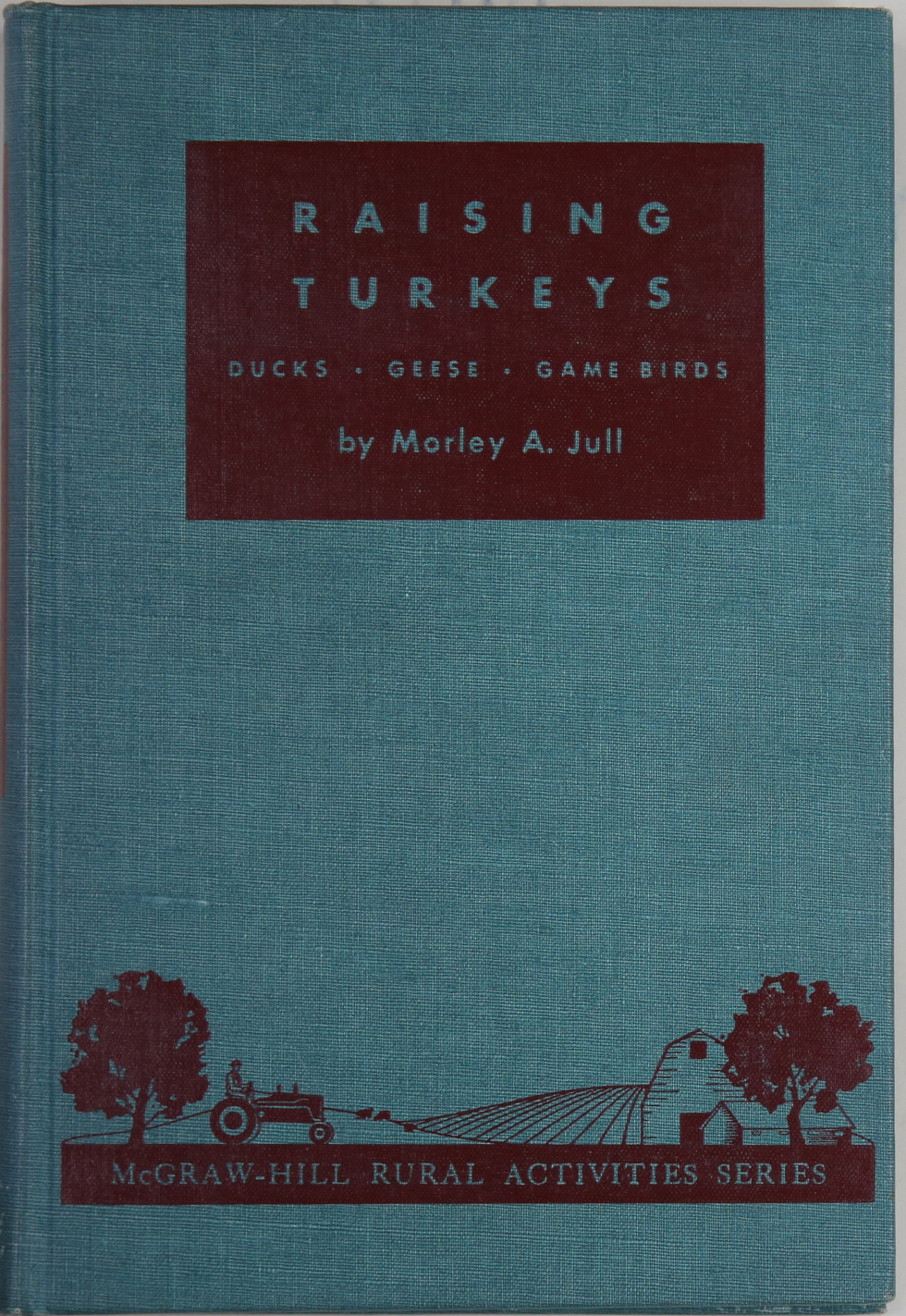
Part 2 Describing the binding and its faults as first seen.
Description. The Poultry Book by Many Expert American Breeders and Harrison Weir FRHS under the editorship of Professor Willis Grant Johnson and George Brown Published by Doubleday Page and Co 1905, often referred to as the Poultry Book by Weir, Johnson and Brown. I will include the details of the illustrations, colour plates, pages per division, sections, and sections per division, as I dismantle.
This is the three volumes in one Poultry book Harrison Weirs our poultry American edition with the input of American experts, It was issued in parts and came in several different binding. The best binding was the three volumes bound as 3 separate volumes. The sections were issues at regular intervals, (how often) and when each volume was complete the owner had the choice is use their own binder, to make cases or to but a premade case to add to the sections, with a local binder doing the assembly work.. These was an option at the end to buy a case for all three volumes, a cumbersome solution and a relatively small number were bound in this way. The remaining bindings were often damaged by the pure weight of the book. However today the 3 volume sets are rarer, so there is some pressure to “restore” to look original. To conserve sometimes means put it all in a special storage box with all the bits that may have fallen off, and just keep them, or in the case of a really rare book rebind exactly the same with the same materials, same methods to recreate the original work. For me to restore this book will mean to not do some works which will make the book serviceable. So I am aiming for repairing the book(s) to be readable and so they will remain as one for a long time.
Faults
I will as best I am able describe now the faults of the books. I am sure more will apear as the dismantle continues.
1/ Obviously the cloth of the spine is damaged and only connected by strips if tape. The lining from inside the spine is missing, with just the cloth cover remaining. I suspect a hollow spine was originally in place but it is missing. The cloth of the spine is very faded and damaged.
2/ The book separates at each of the sub sections. These have separated because of two faults. One, the books were not opened properly. A new book must be opened correctly section by section, especially one as big as this. This ensures the stresses trapped in the spine at binding and gently loosened and the books is allows to open gradually. If done correctly the book ( same for any book) will survive many more uses that one casually opened somewhere. This big set has been dropped open at the junctions of each of the book sections. The opening of such a heavy book by simply allowing it to drop open, causes the spine to split at that opening location. In this case the book has been dropped open at the junction between 1 and 2 and the junction between 2 and 3. An attempt has been made to and cloth joints to cover the obvious cracks, and that simply moves the problem to an adjoining section. In addition the first section of each of the volumes has been oversews to try to create a stronger joint at these breaks but again it shifted the stress somewhere else,
3/ In addition once the sections were moving separately it put a lot of stress on the thread sewing the sections together. As each part of the book moves away from its neighbour, the sewing thread has been moving back and forward causing the sewing holes to be enlarged, and the threads have almost worn through the tapes which hold the boards in place.
4/ The boards are covered in red cloth, now very faded, and the corners of the boards very badly damaged under the remains of the cloth sides. To use or not reuse the boards that is the question. I am leaning on the side of replacing with a heavier board. The front cover on the outside is quite wrinkled where the cloth has delaminated from the board, on the inside the end paper was lifted and replaced after another clumsy repair, and is not glued down well but wrinkly. Top front corner very crushed.
Rebuilding a Poultry Book, an unfolding story. Part 1
I have been requested to rebuild this book posting the stages online. It began with a other article featuring this book asking if it should be repaired or restored posted both here and on the chickenhistorynow facebook page. So now I will follow up and try to show whats required not to just pretty it up but to make a readable and reasonable tough book.
Read more: Rebuilding a Poultry Book, an unfolding story. Part 1 and part 2
